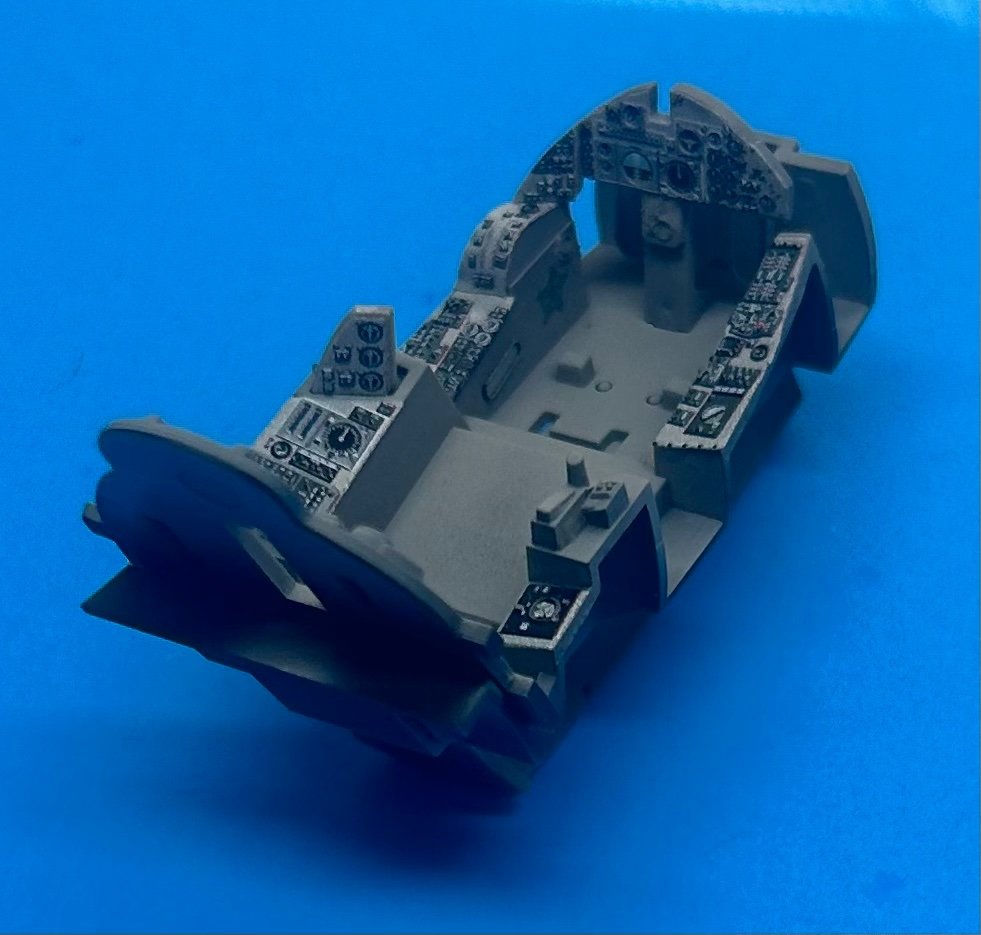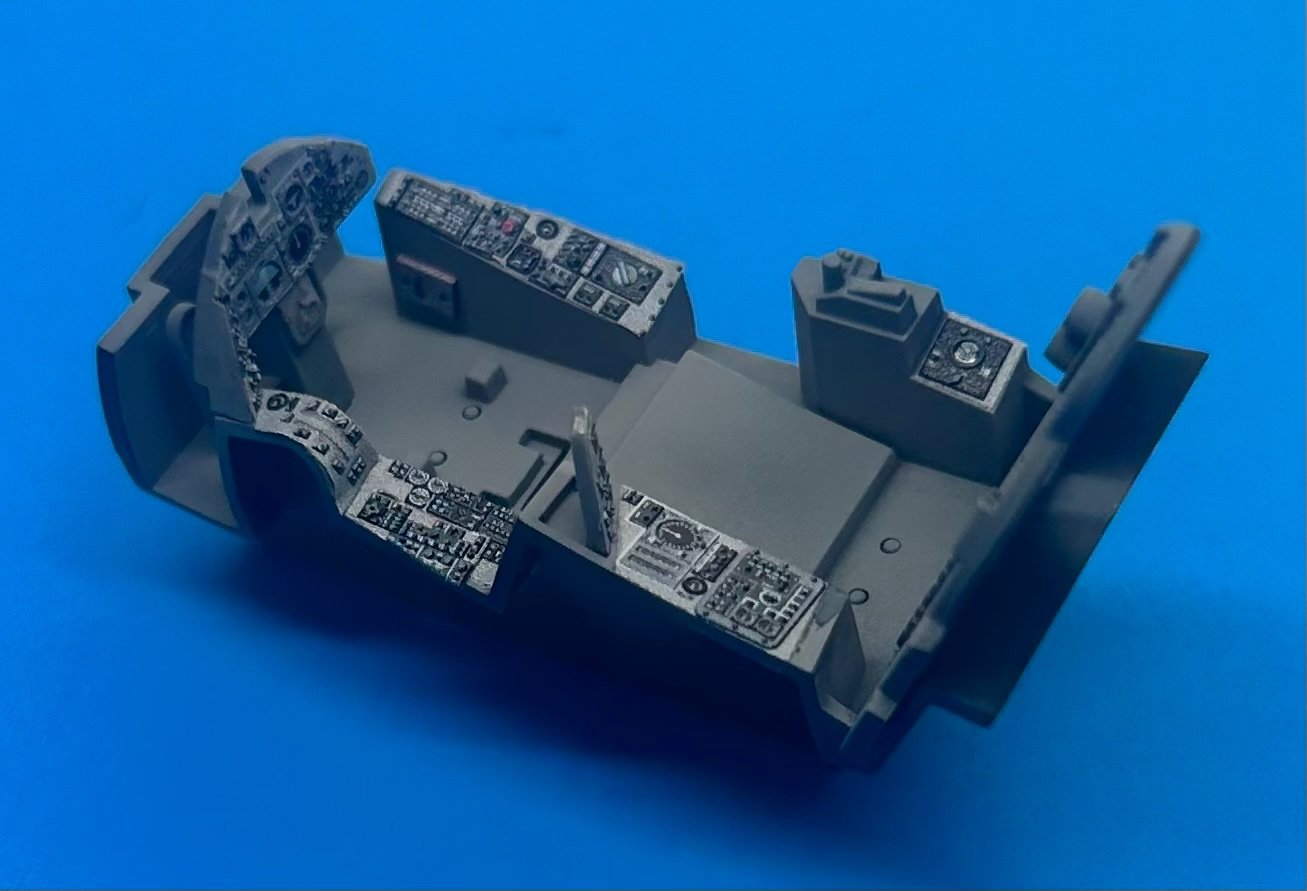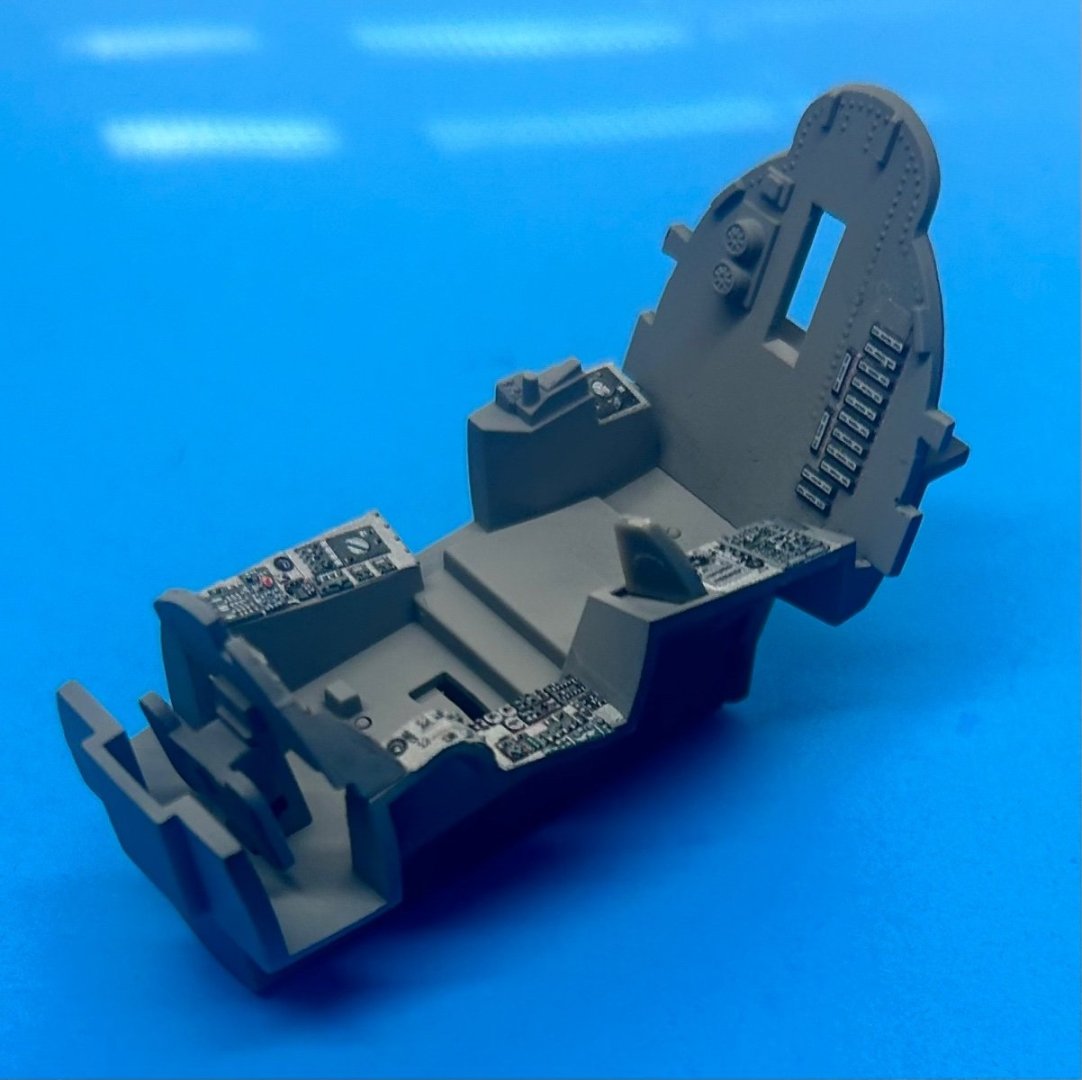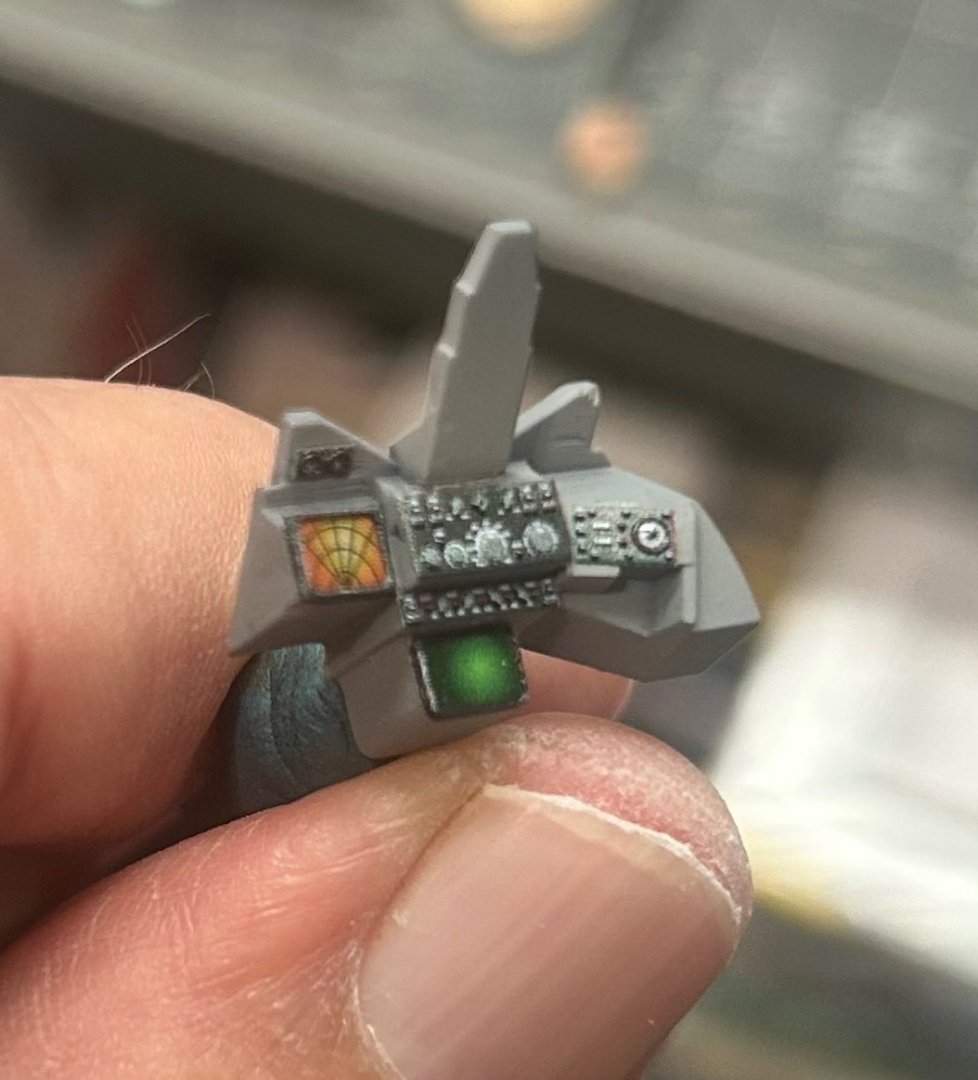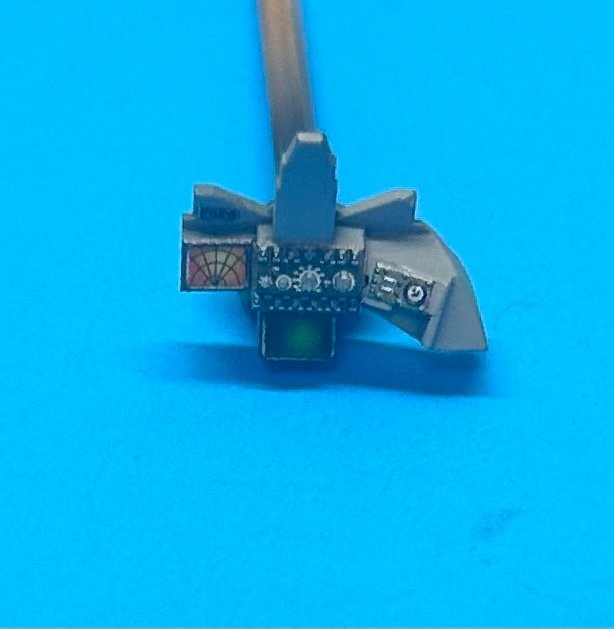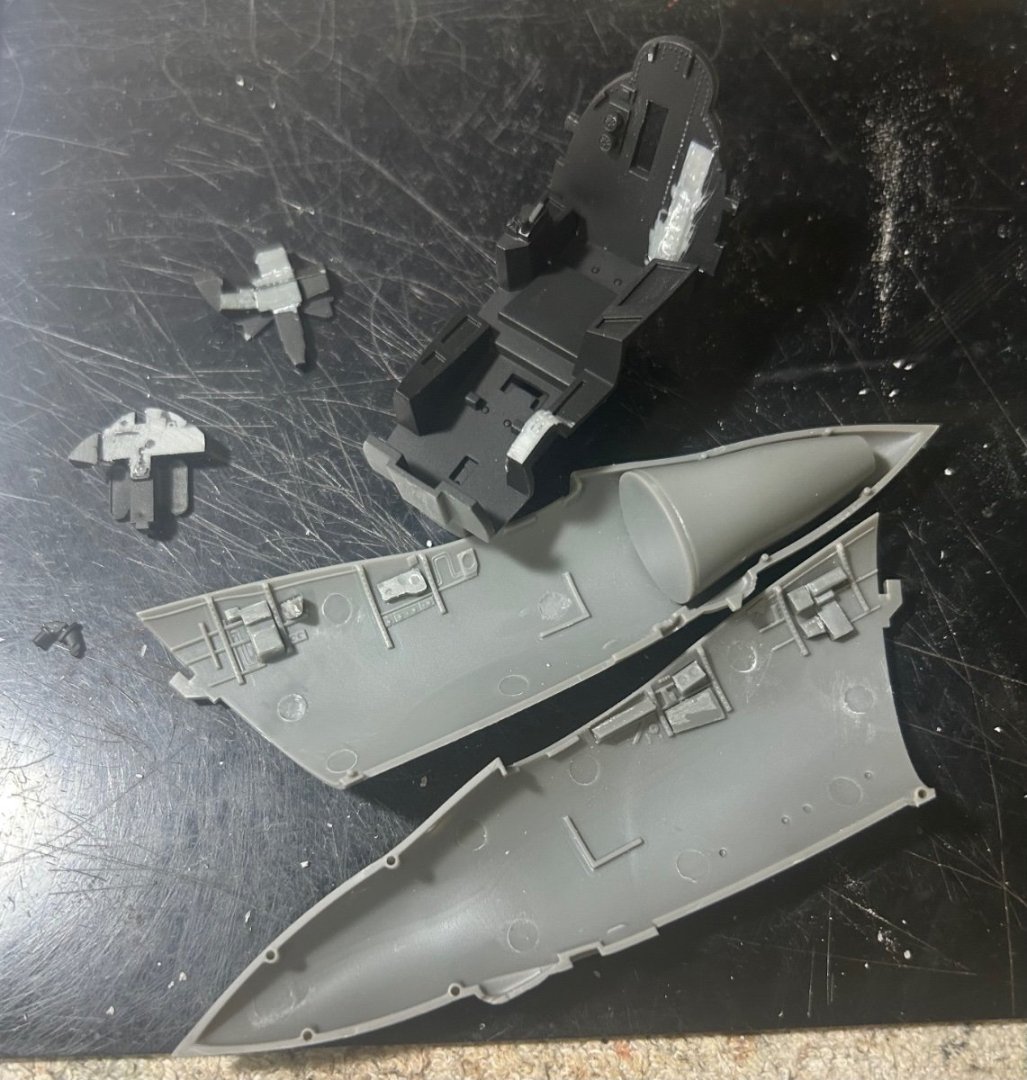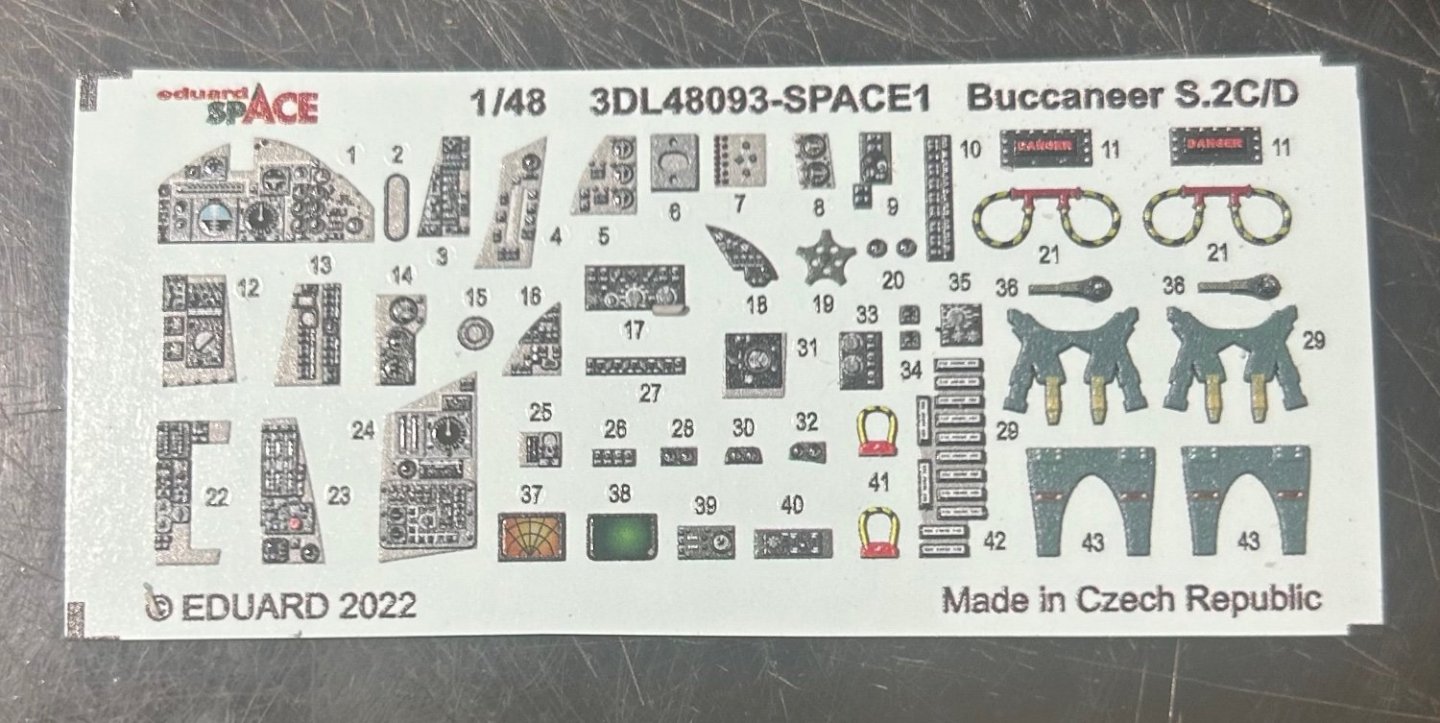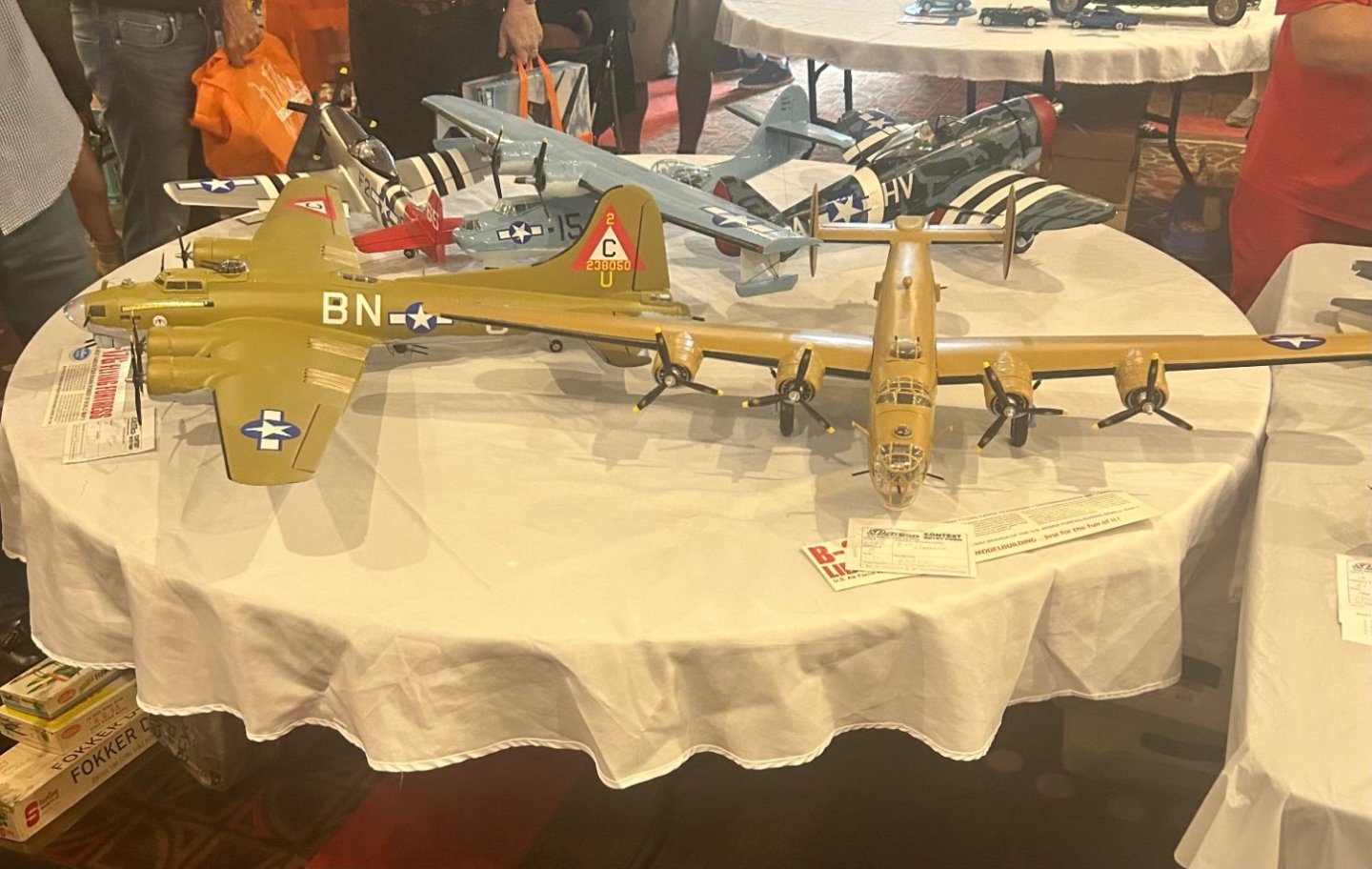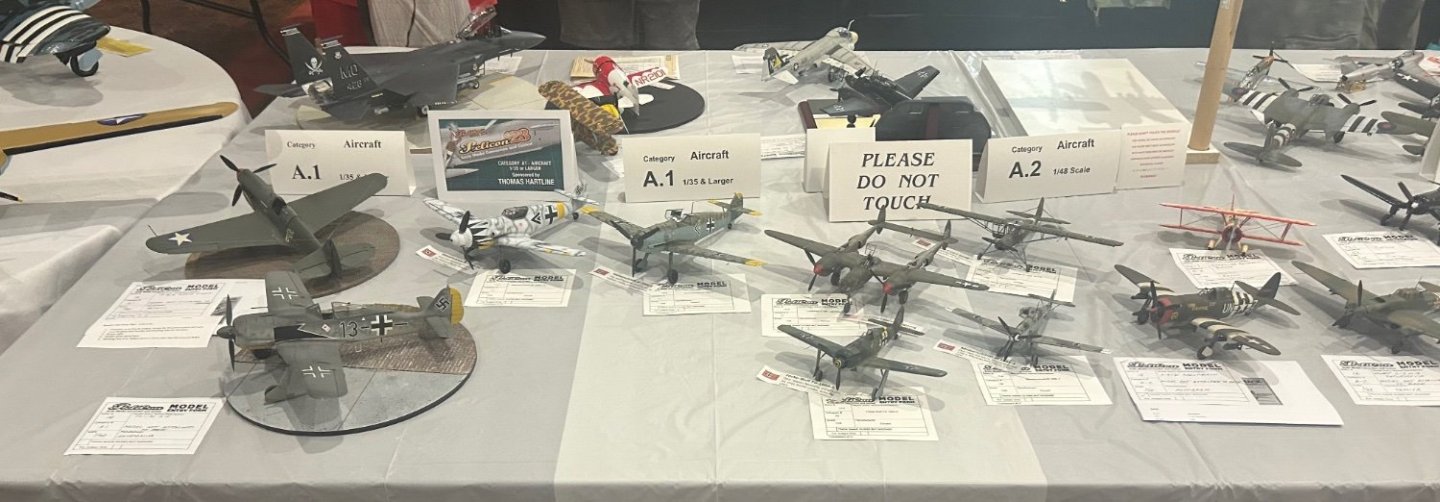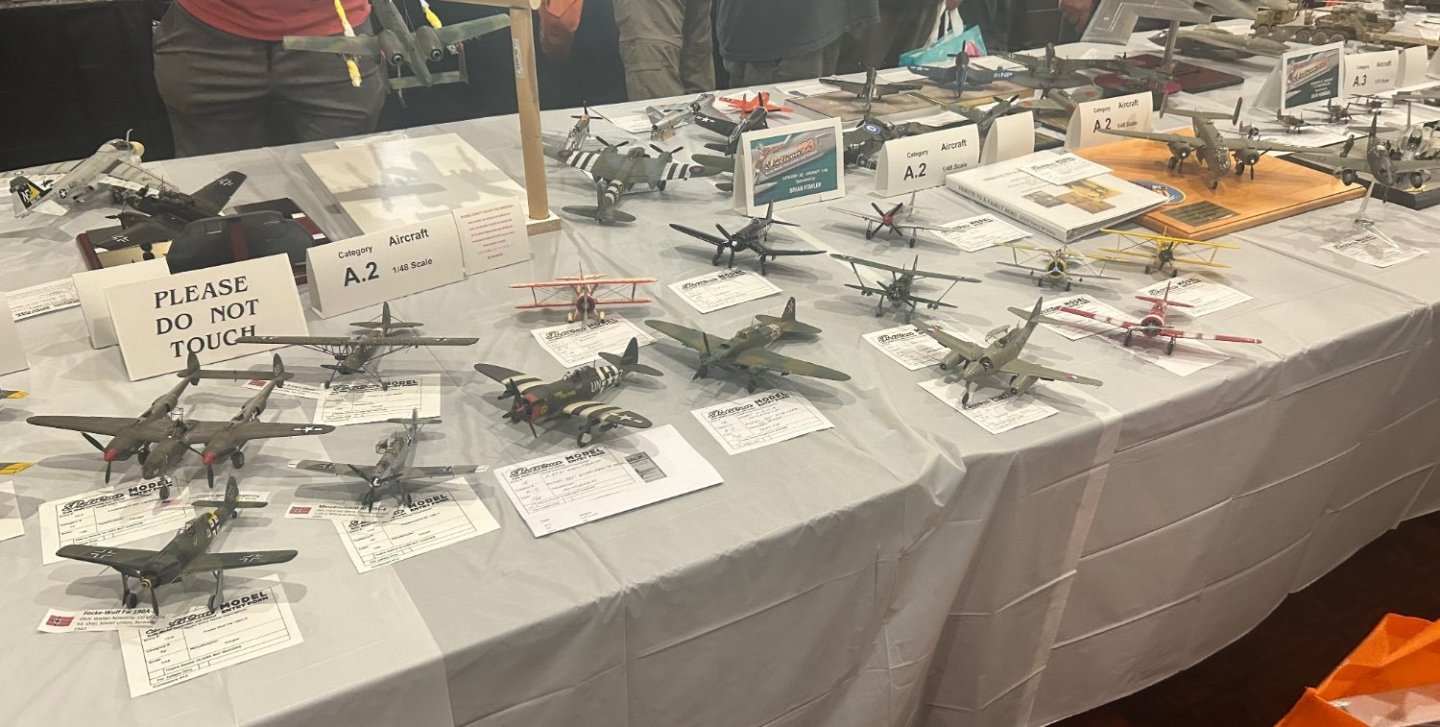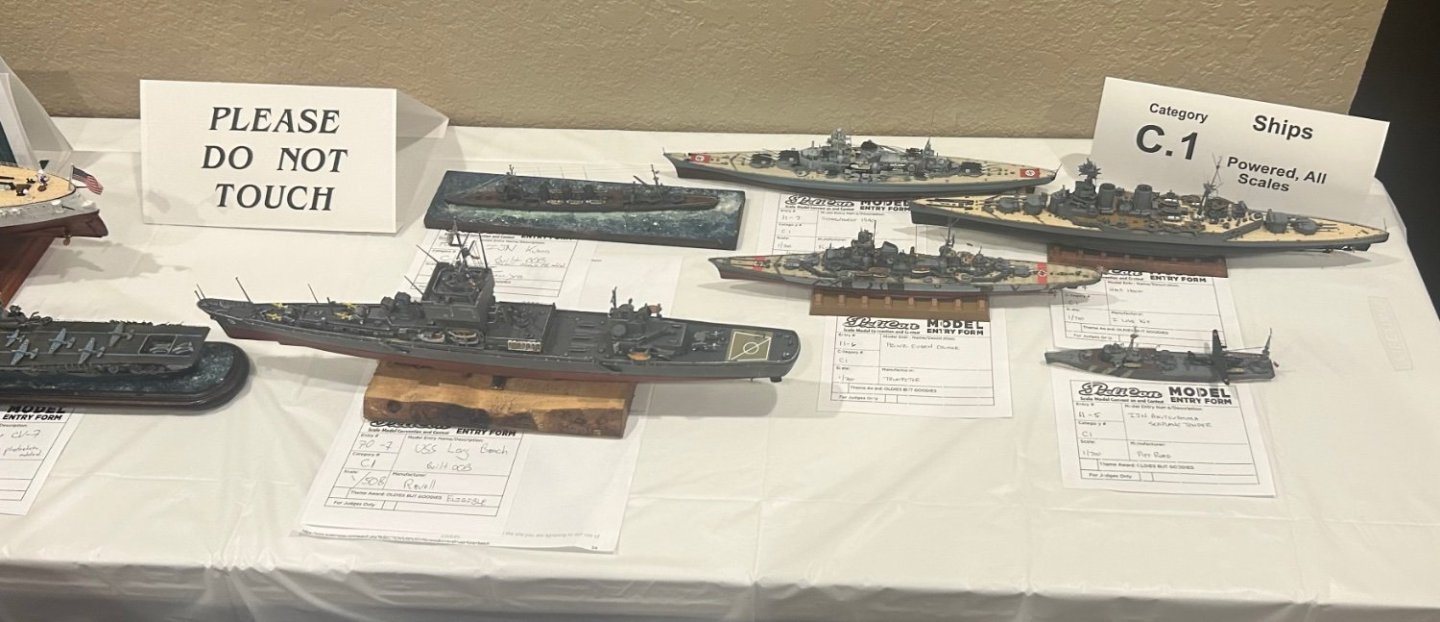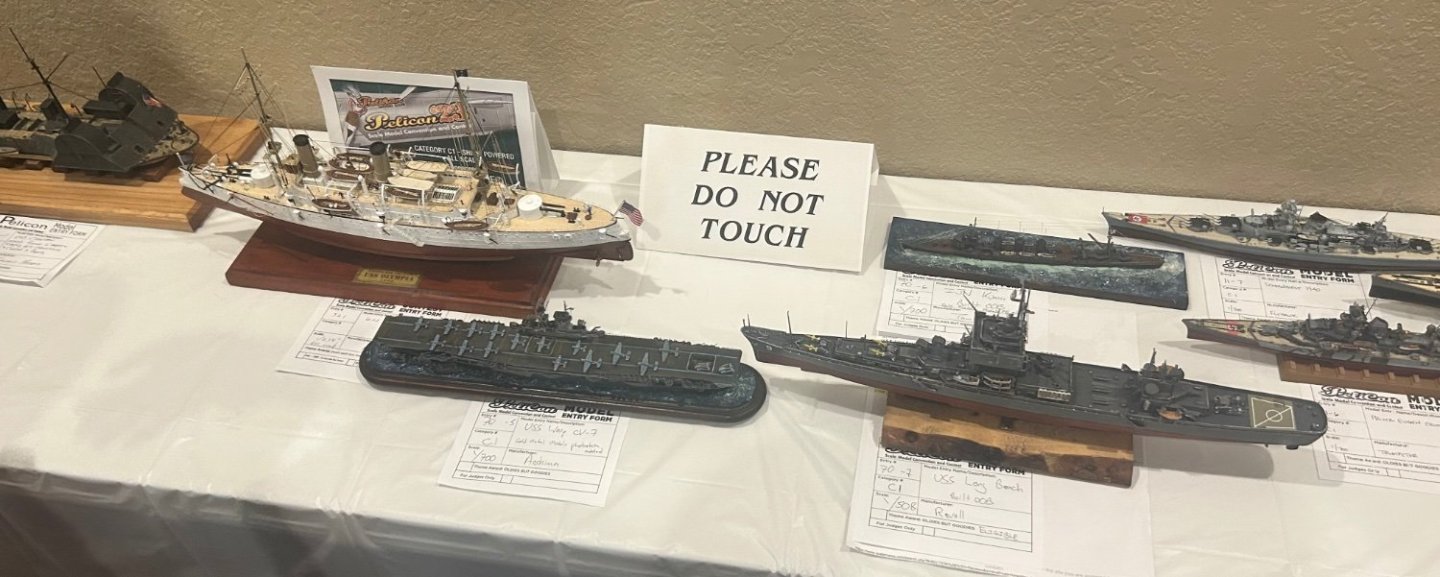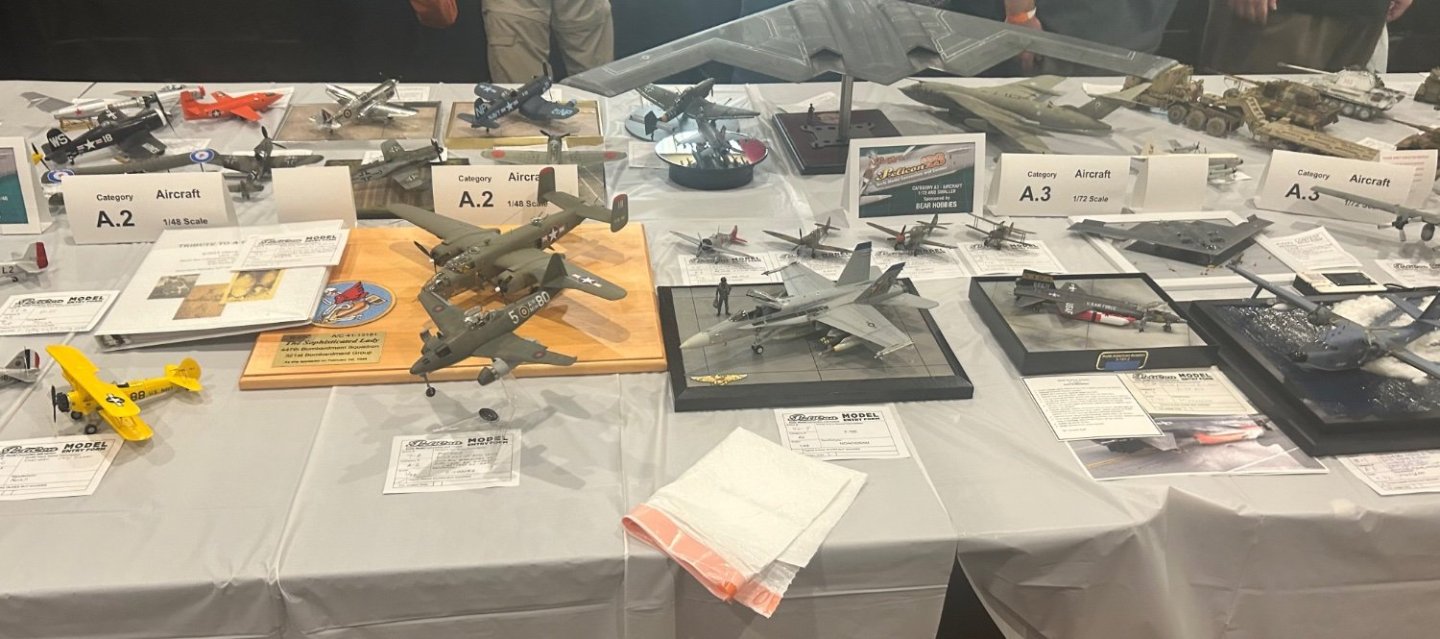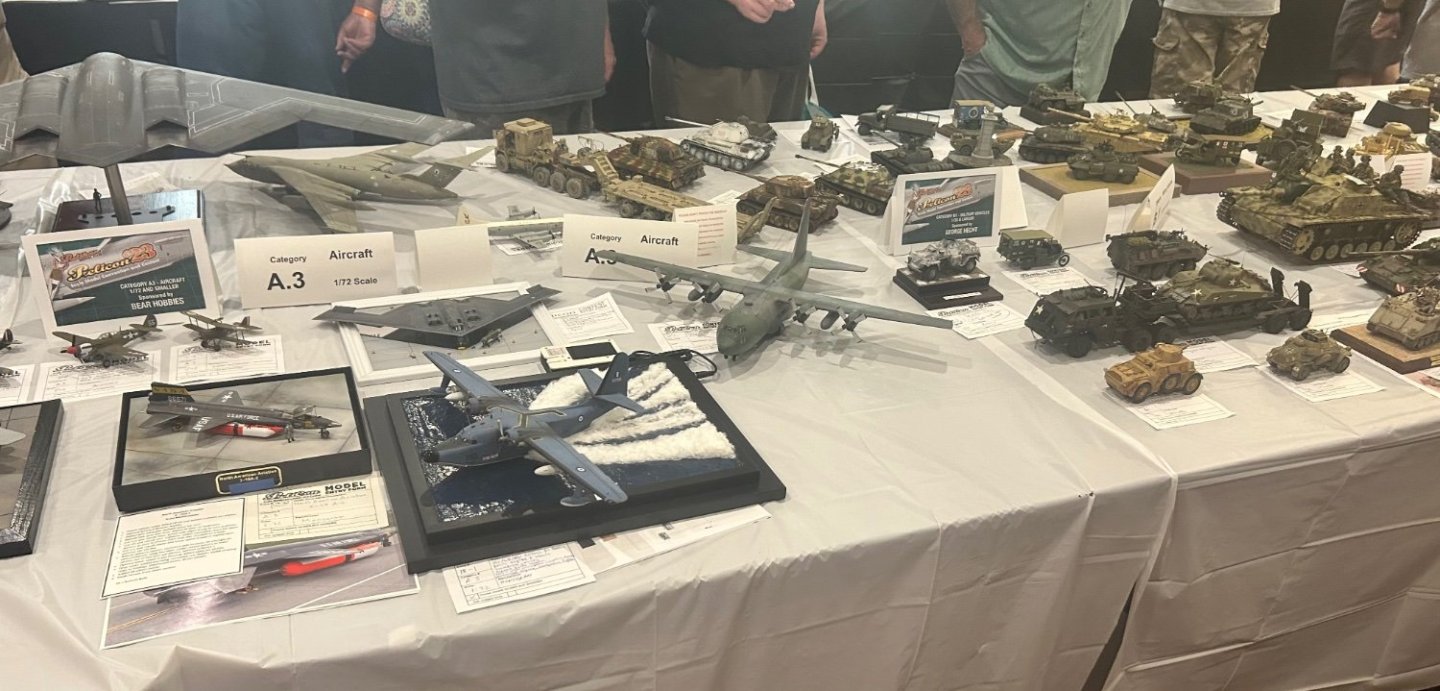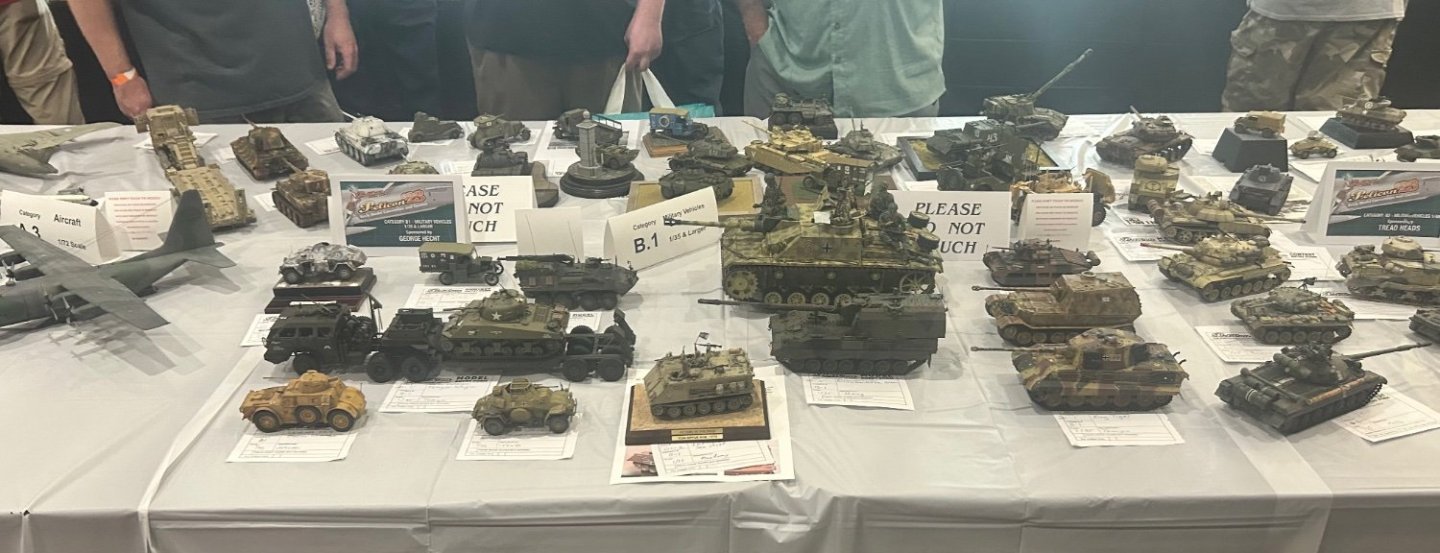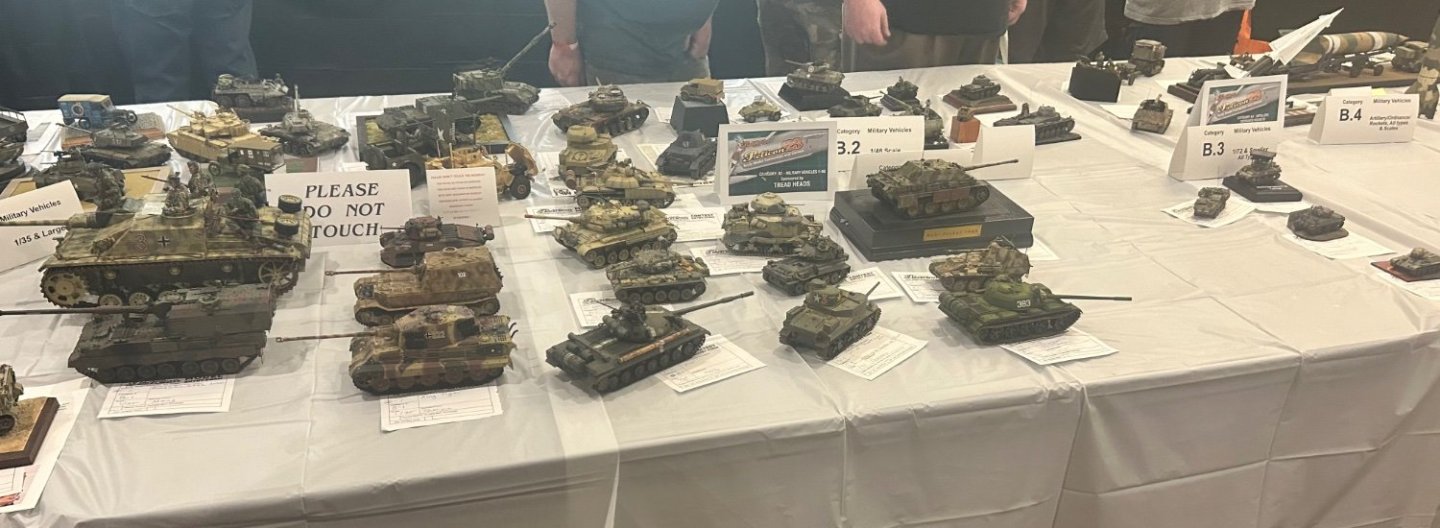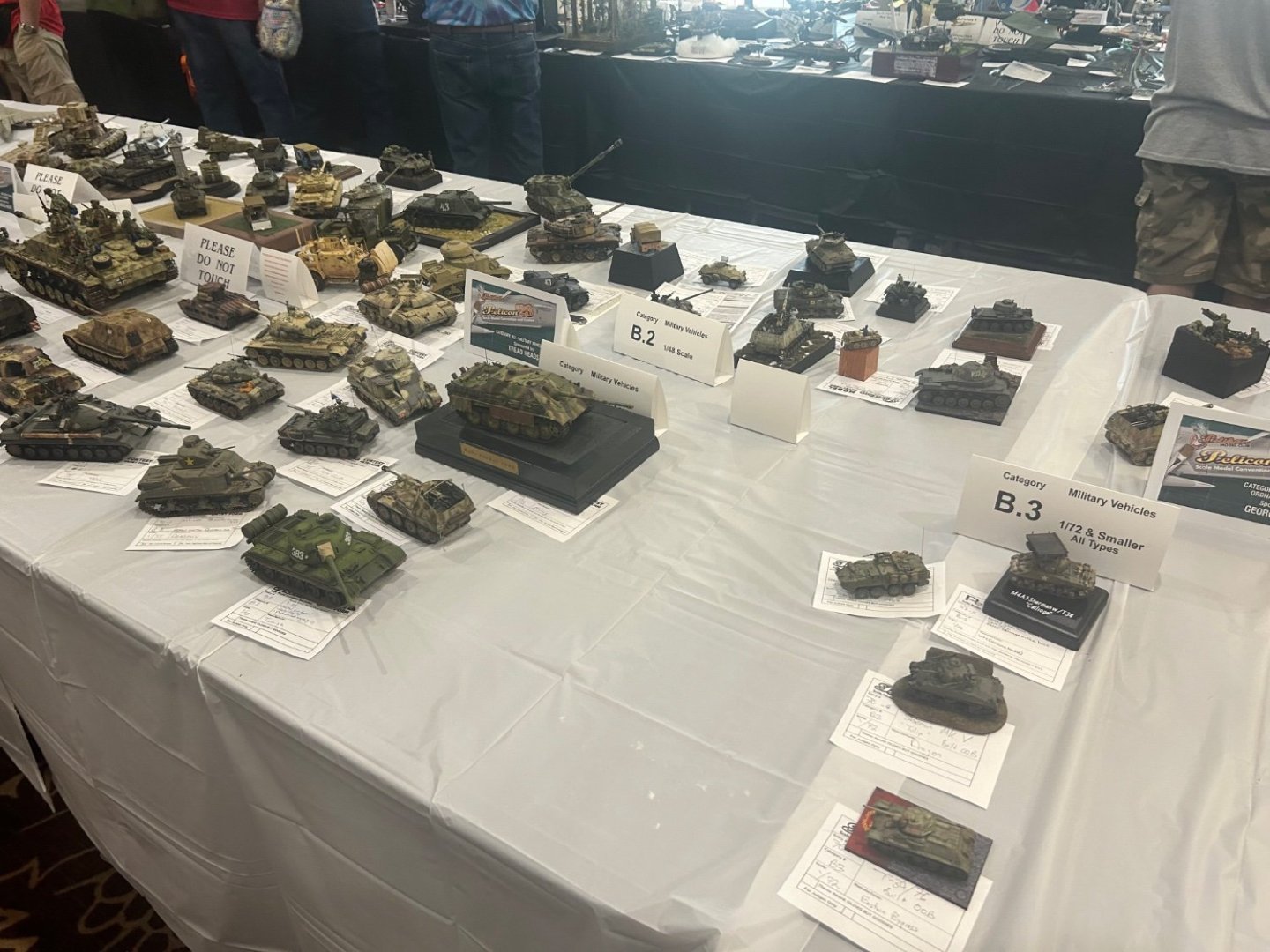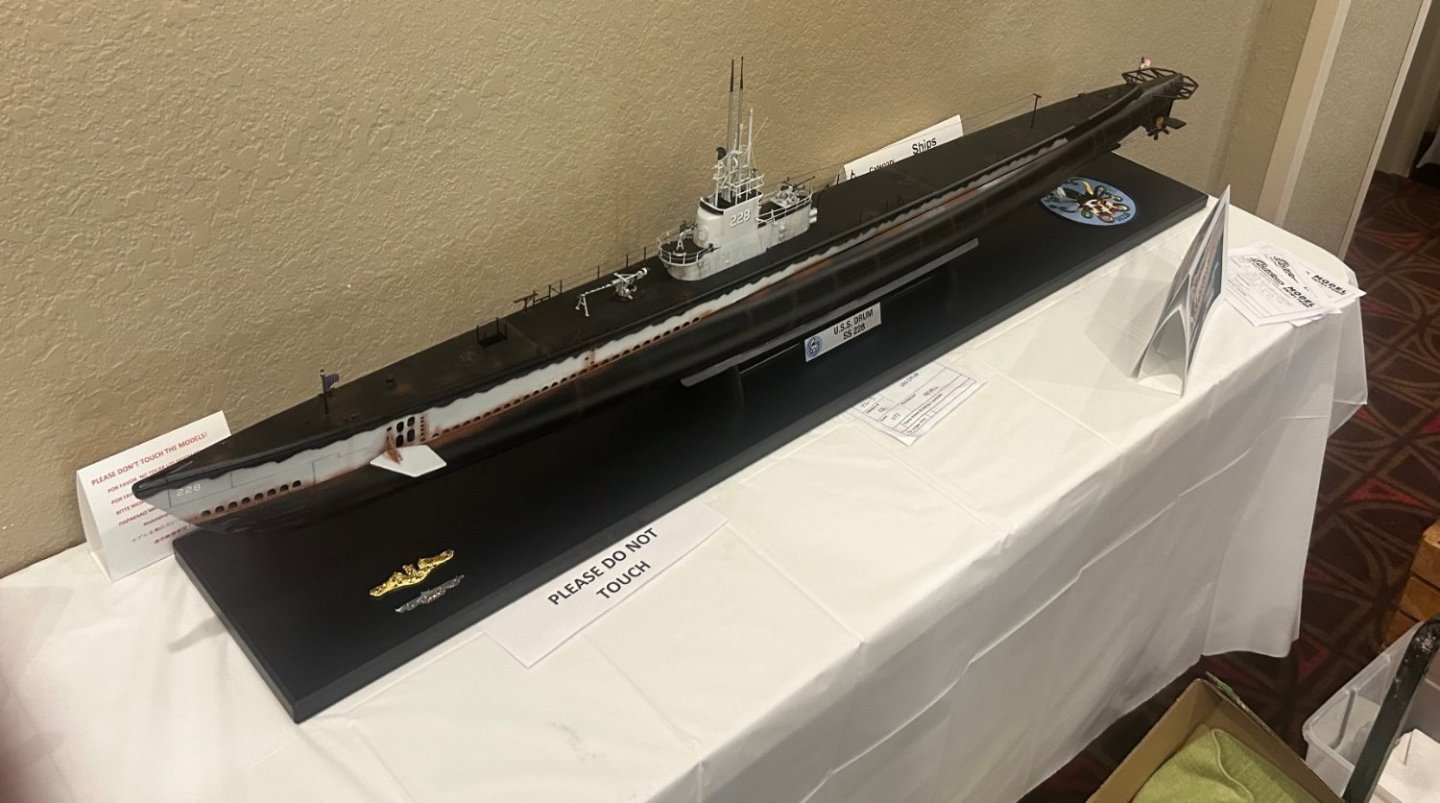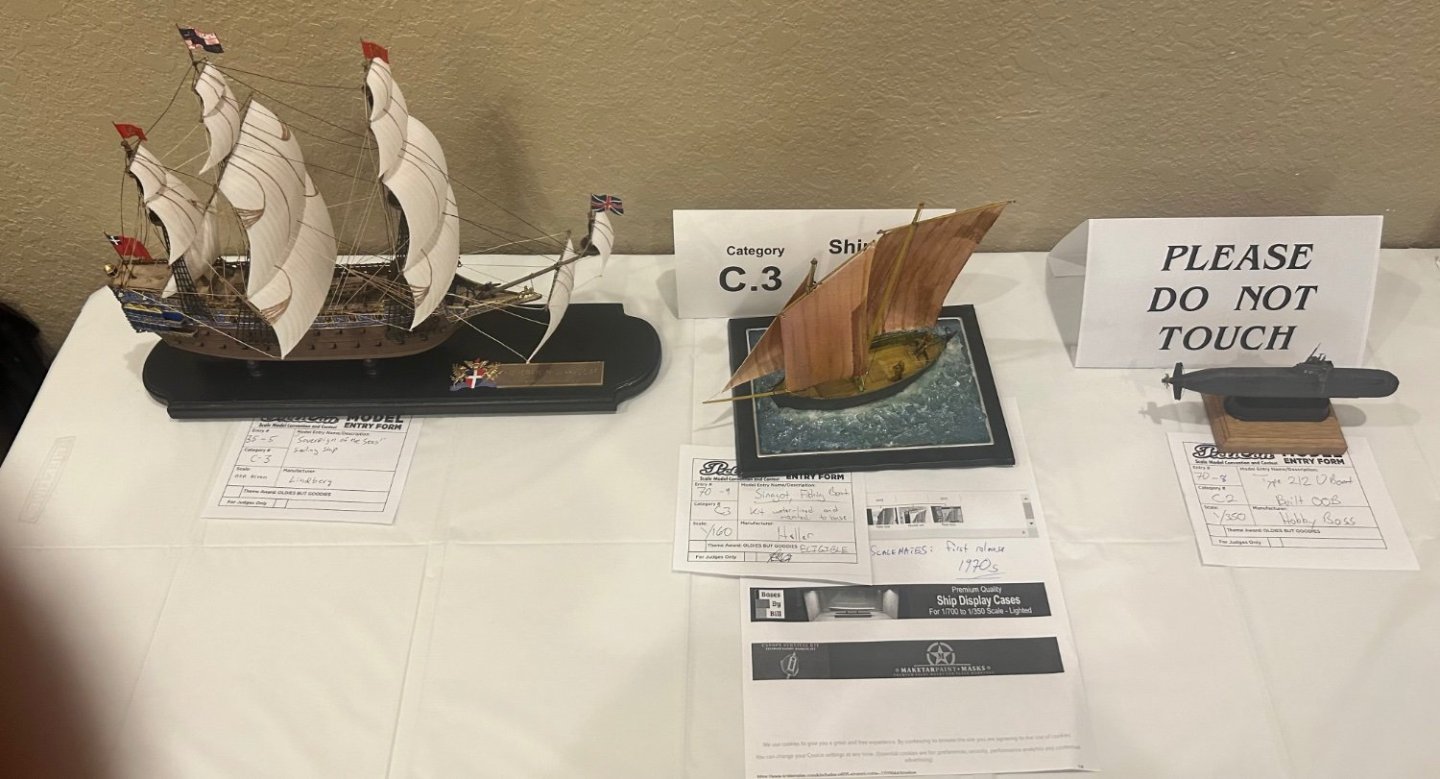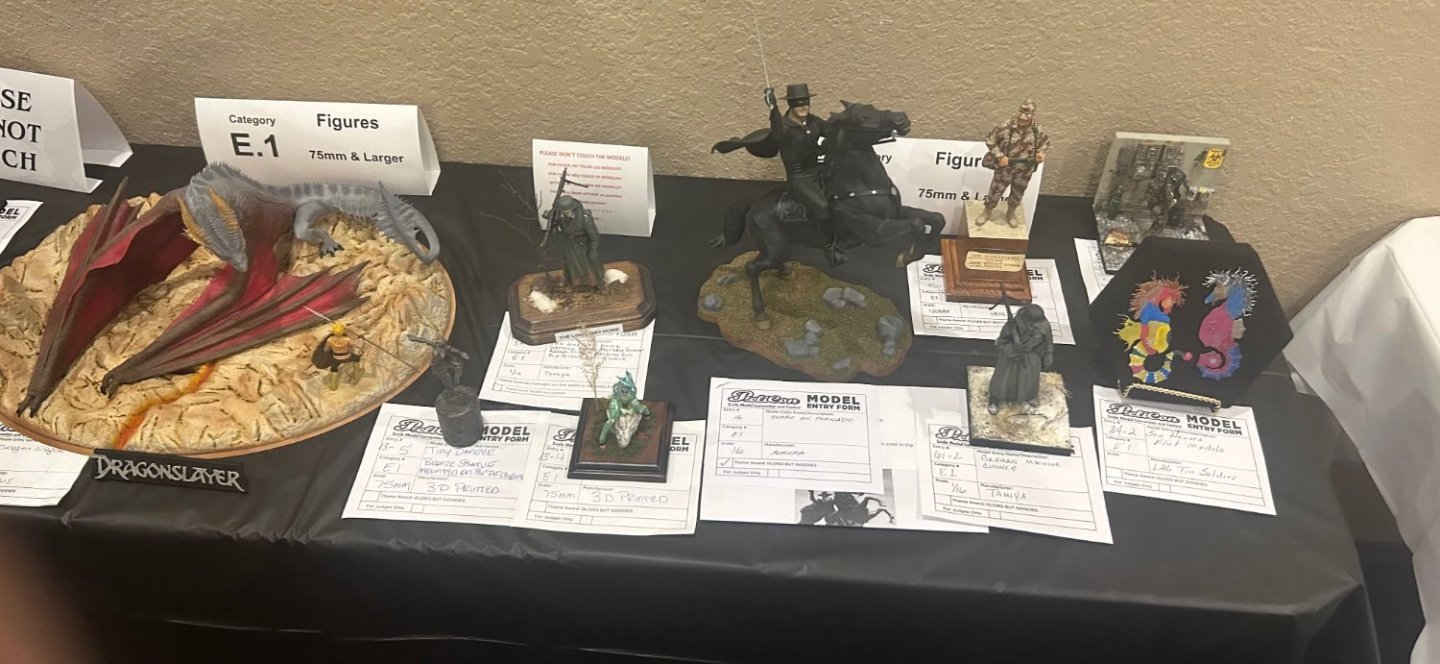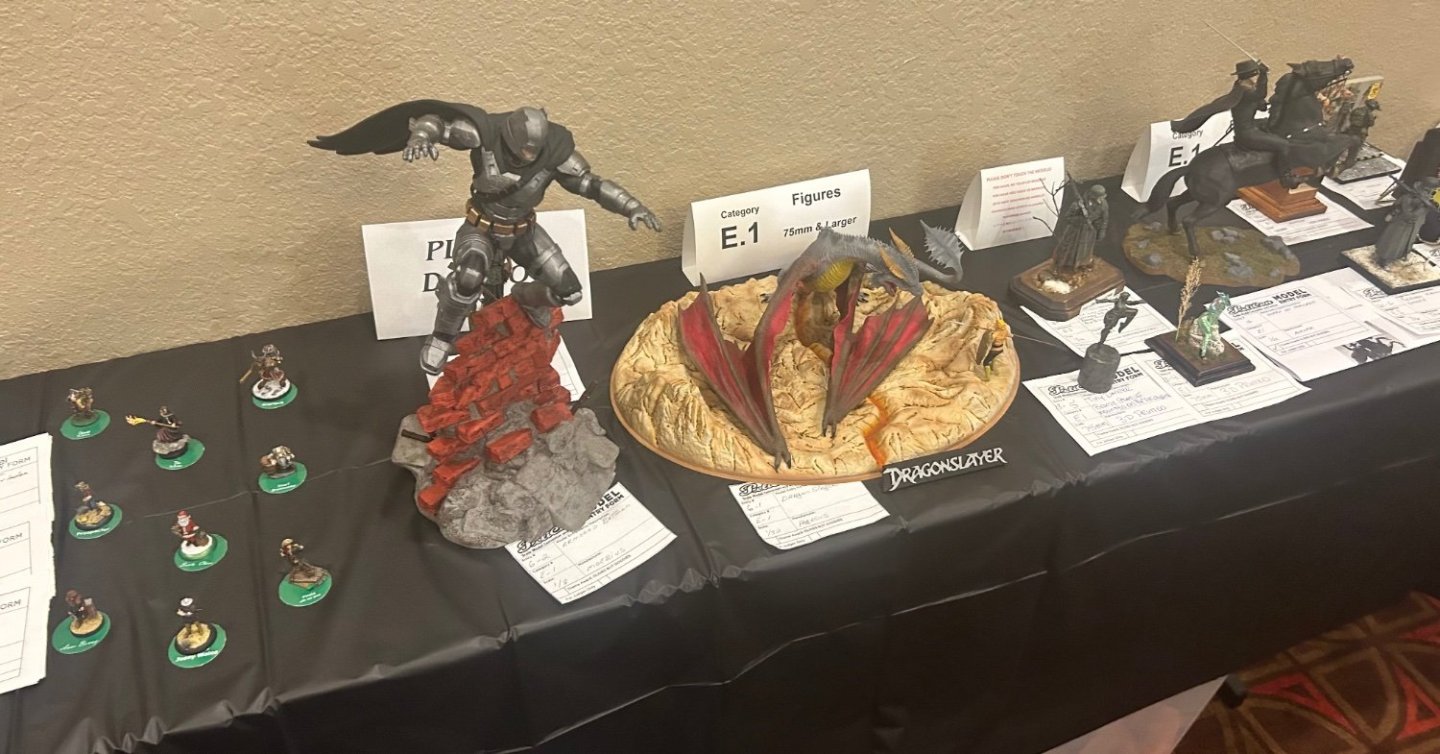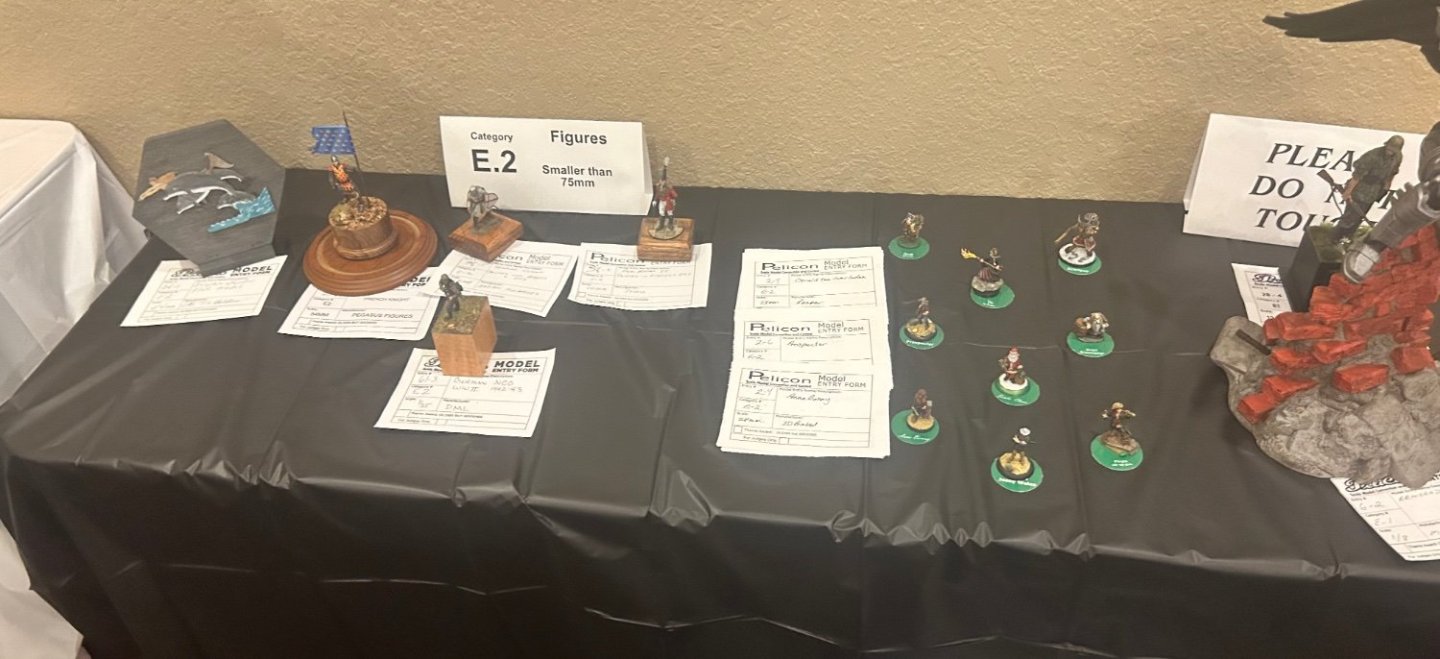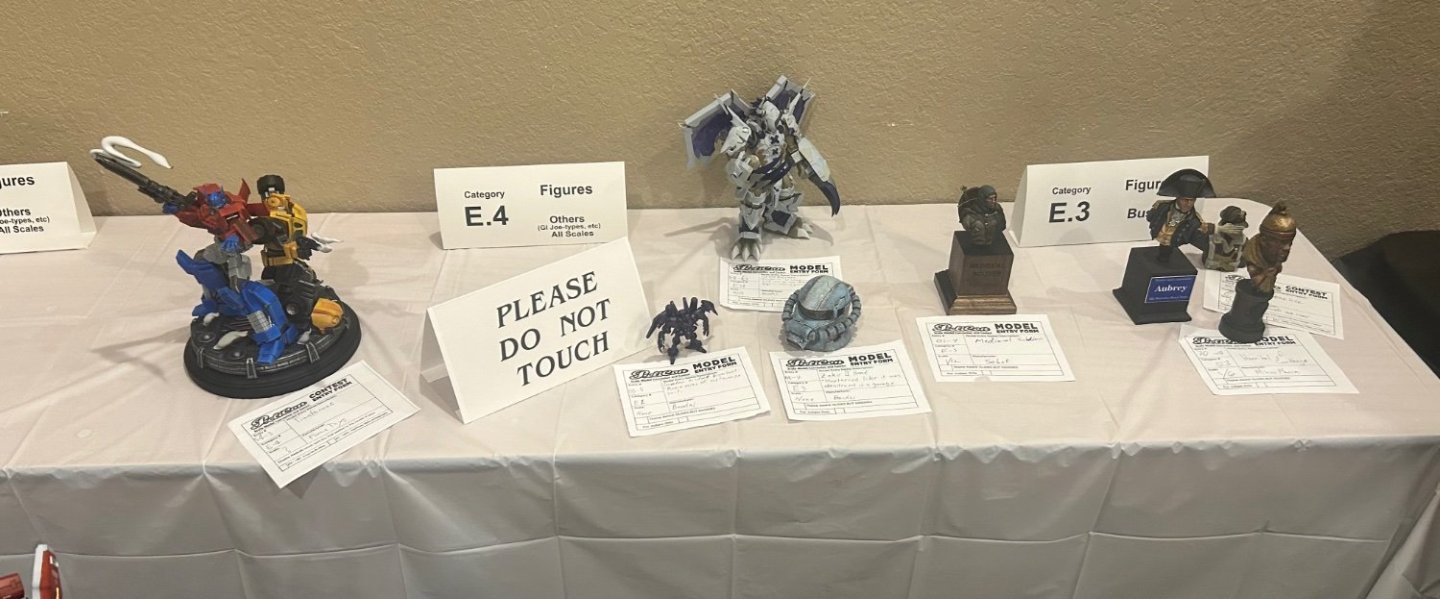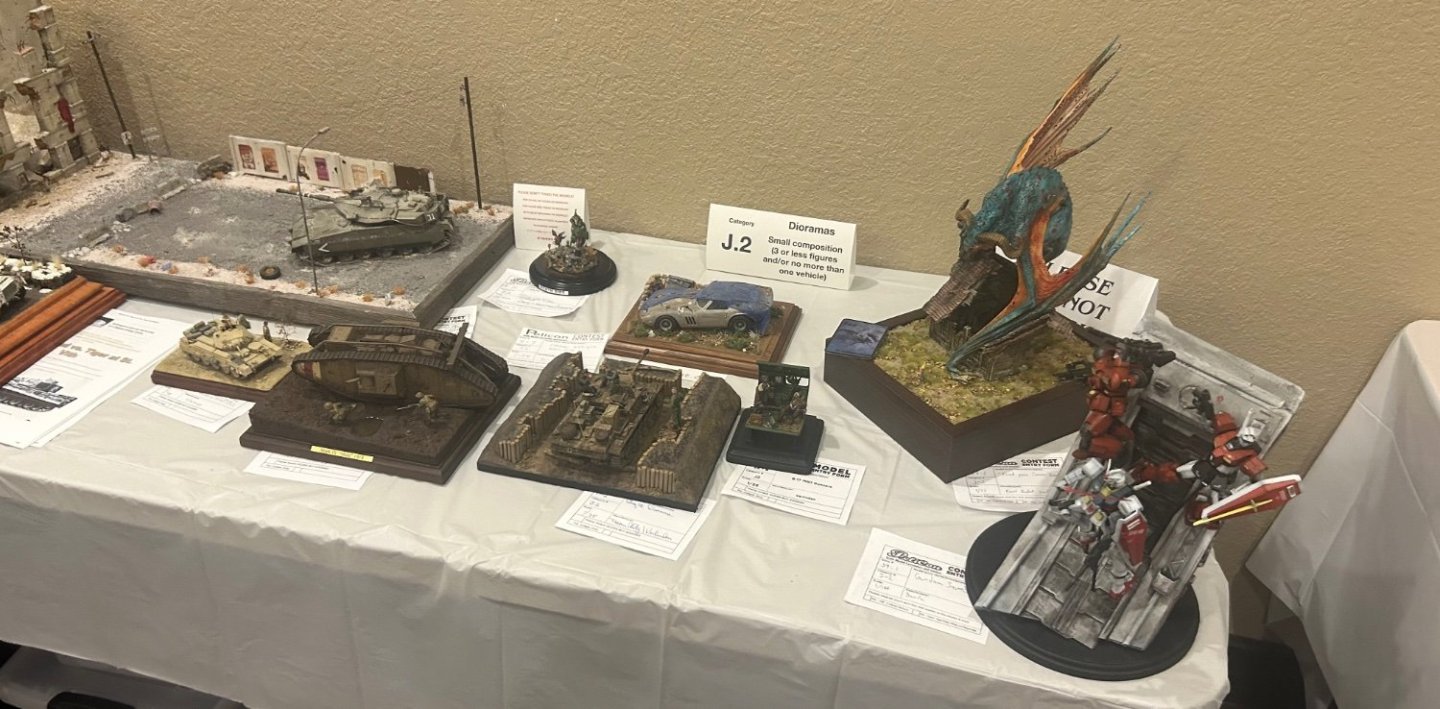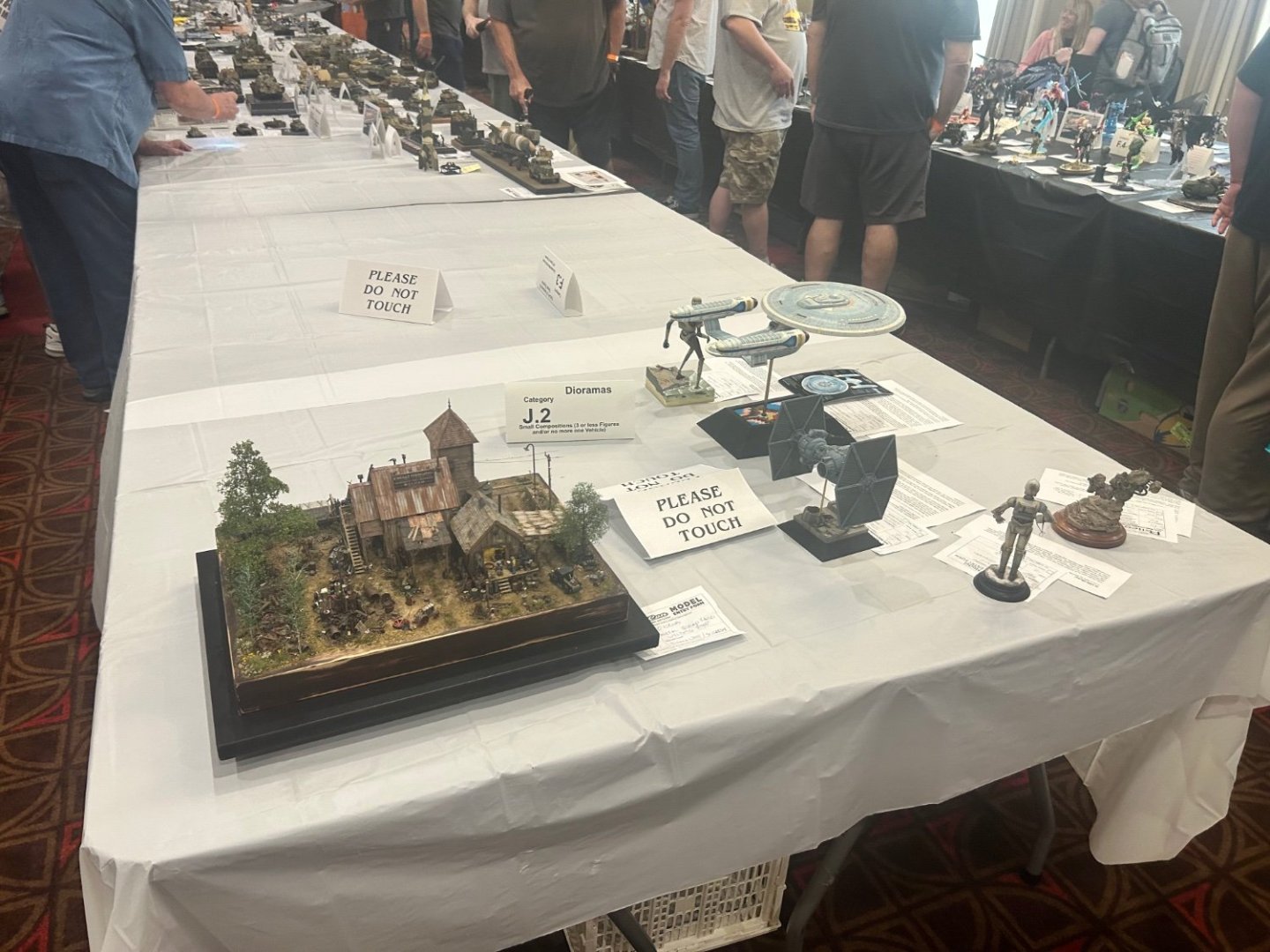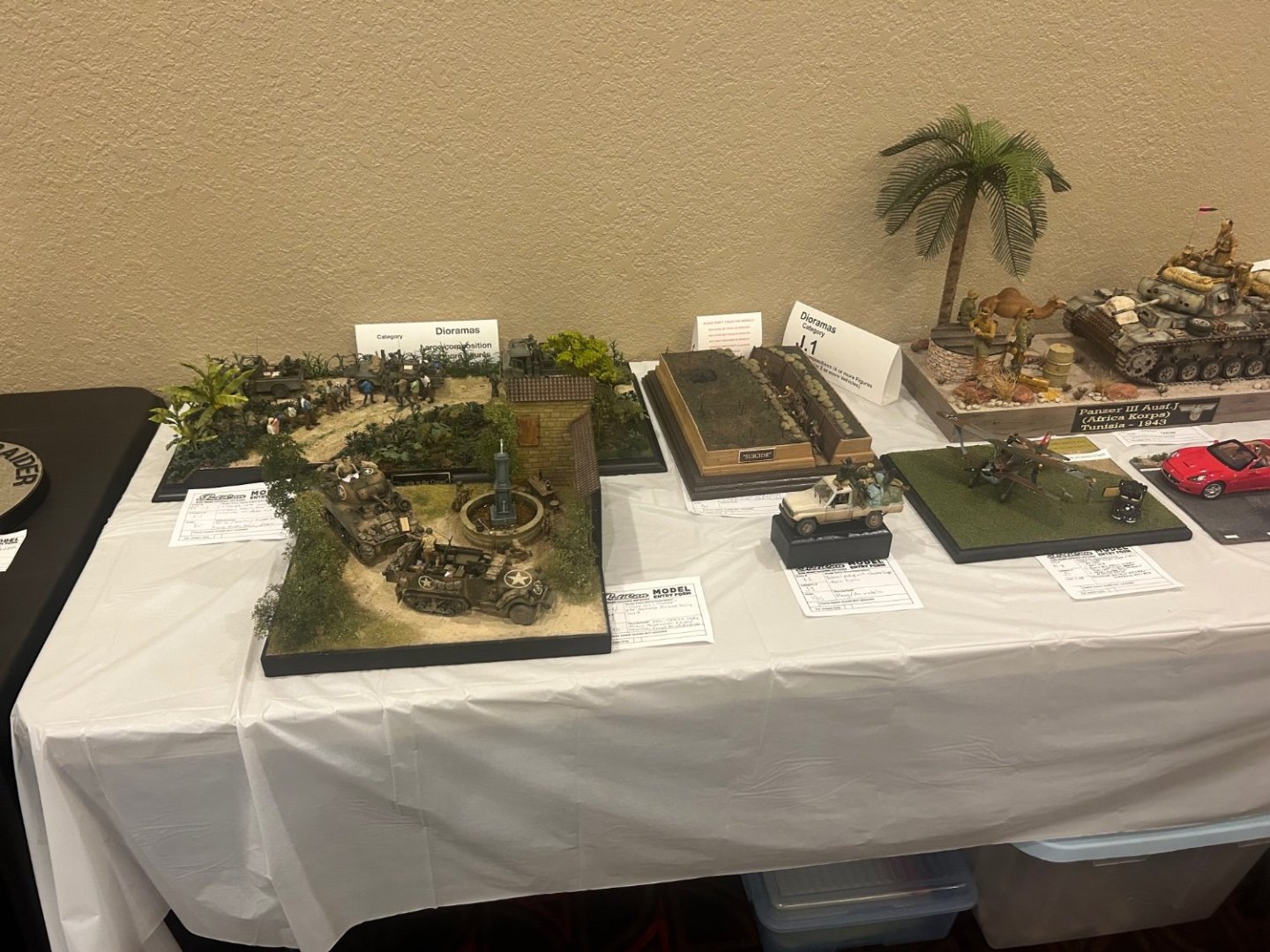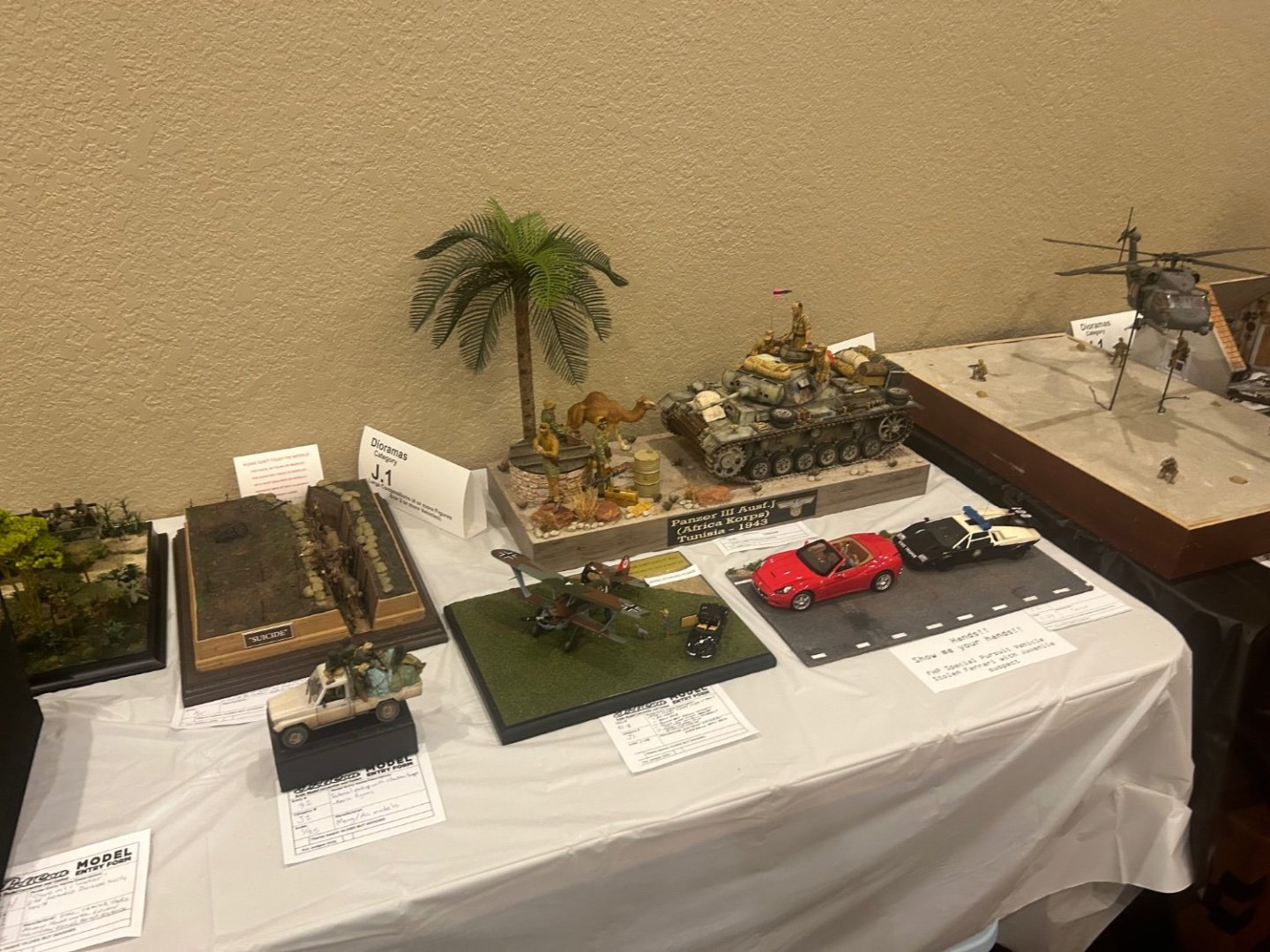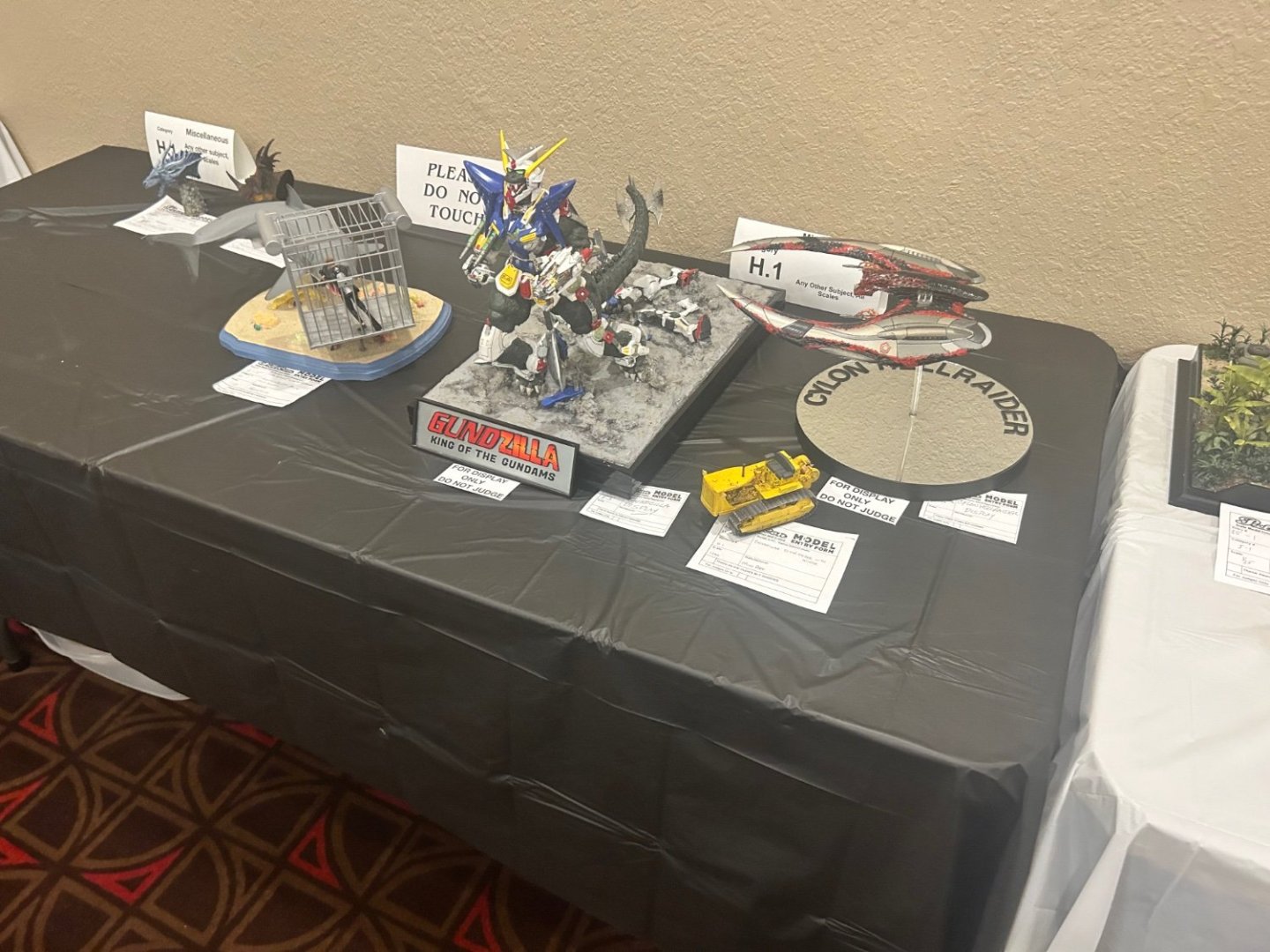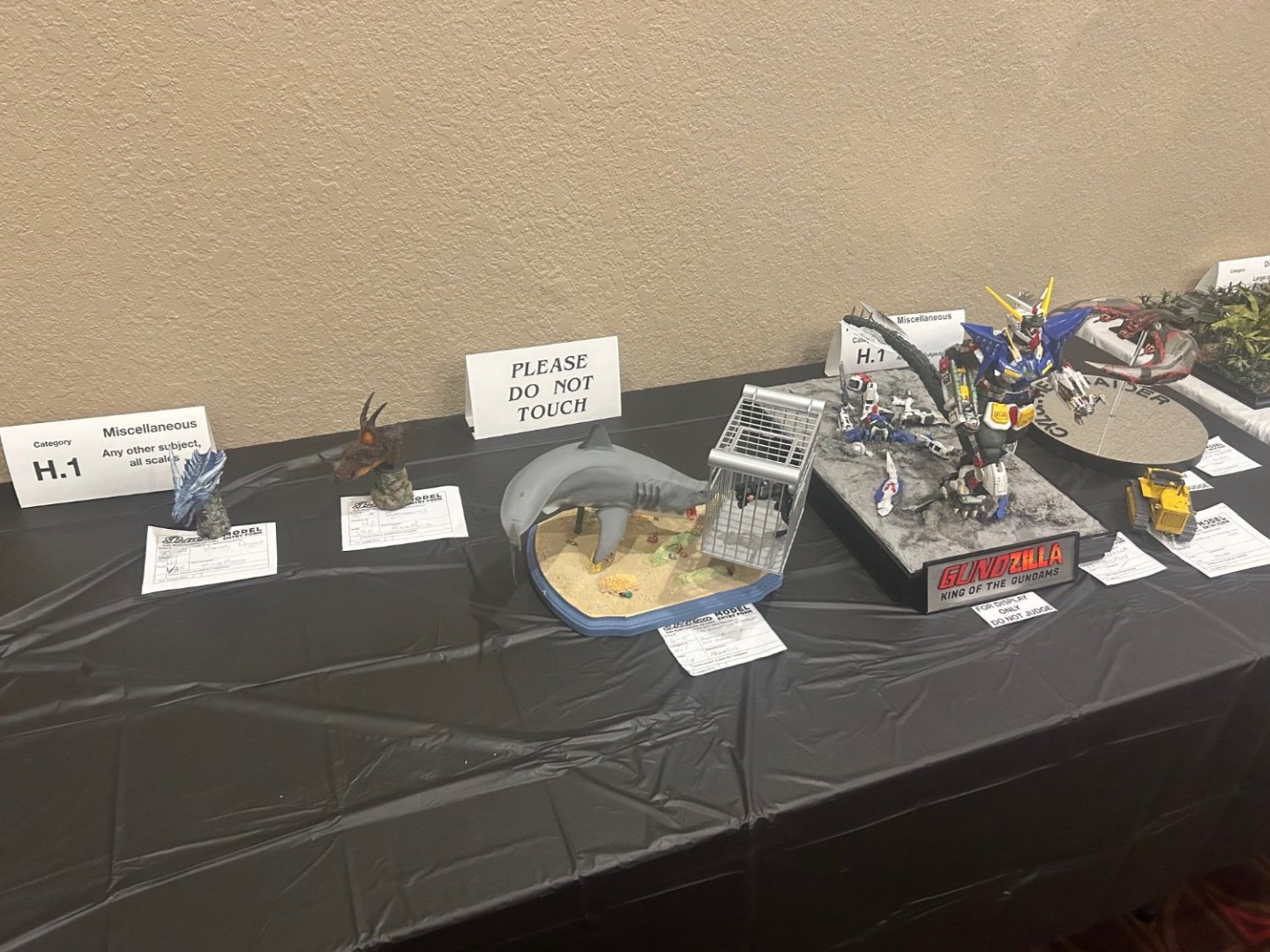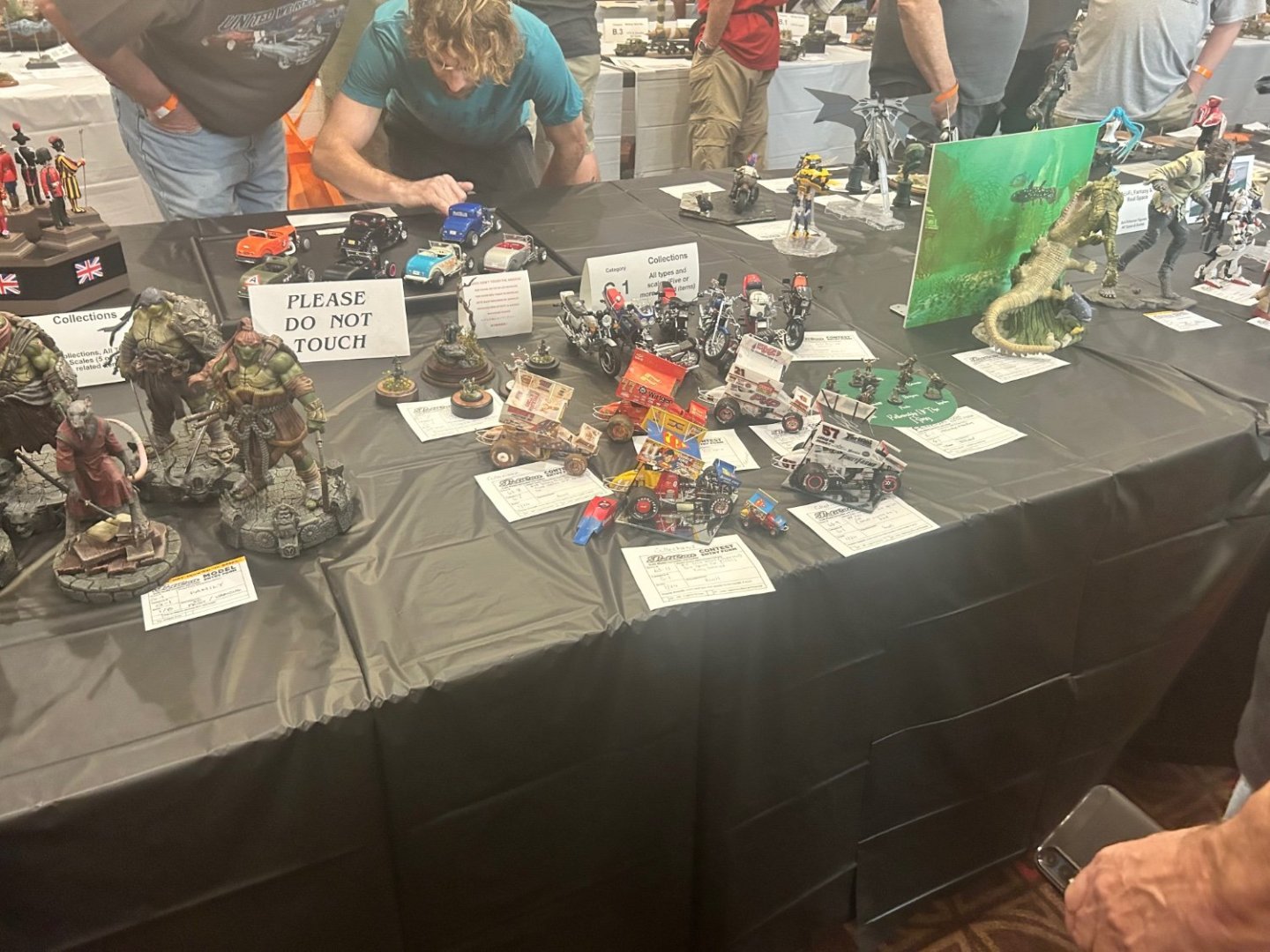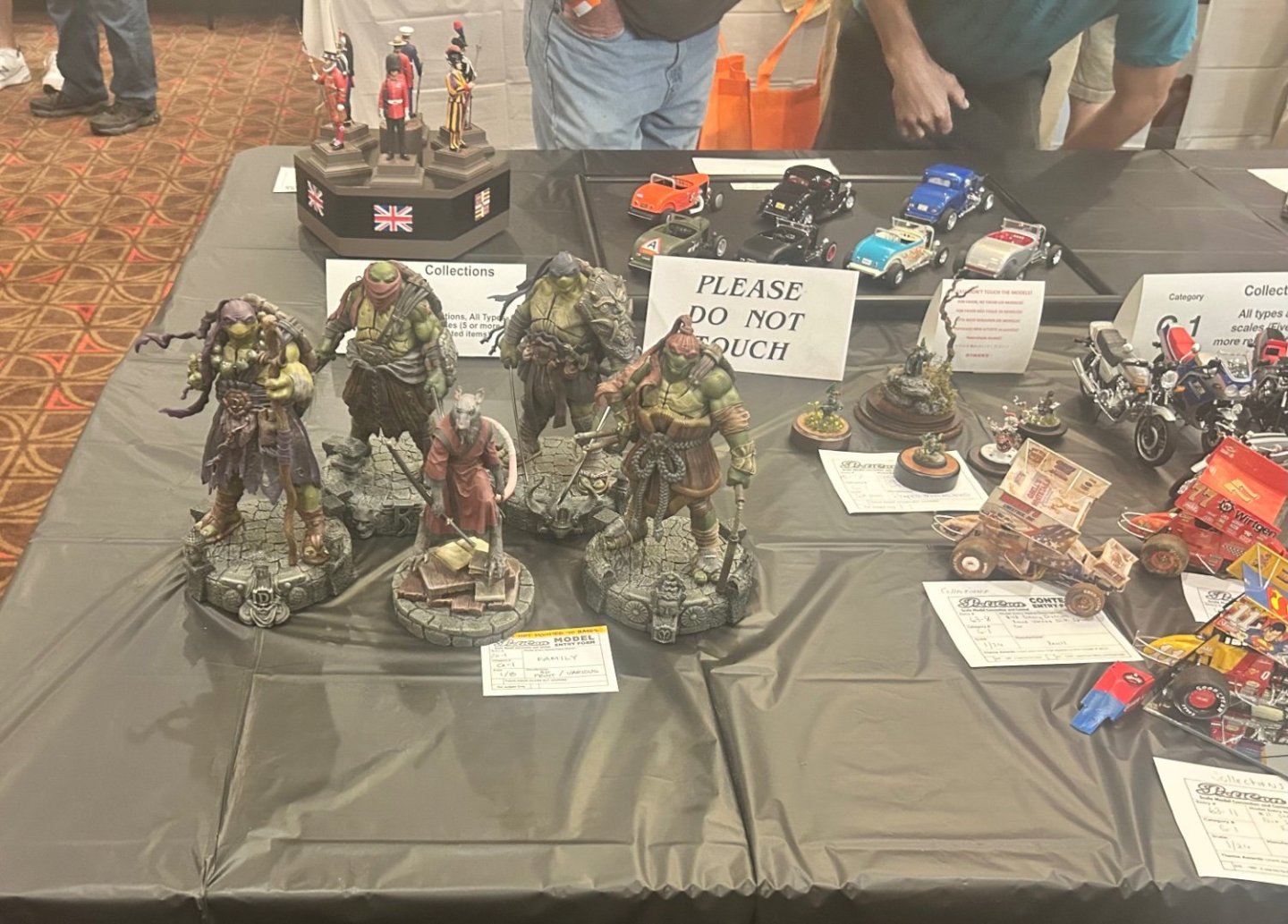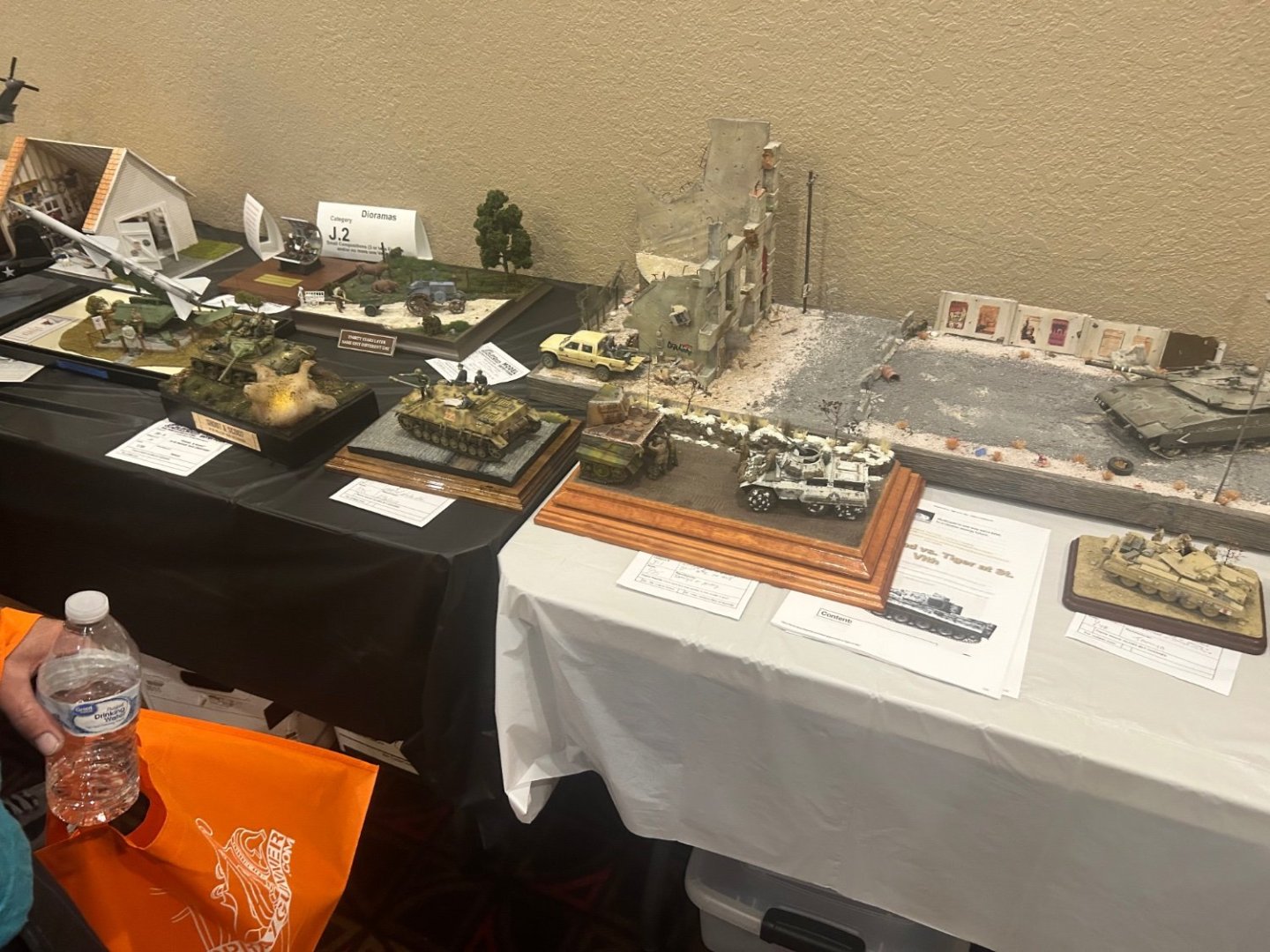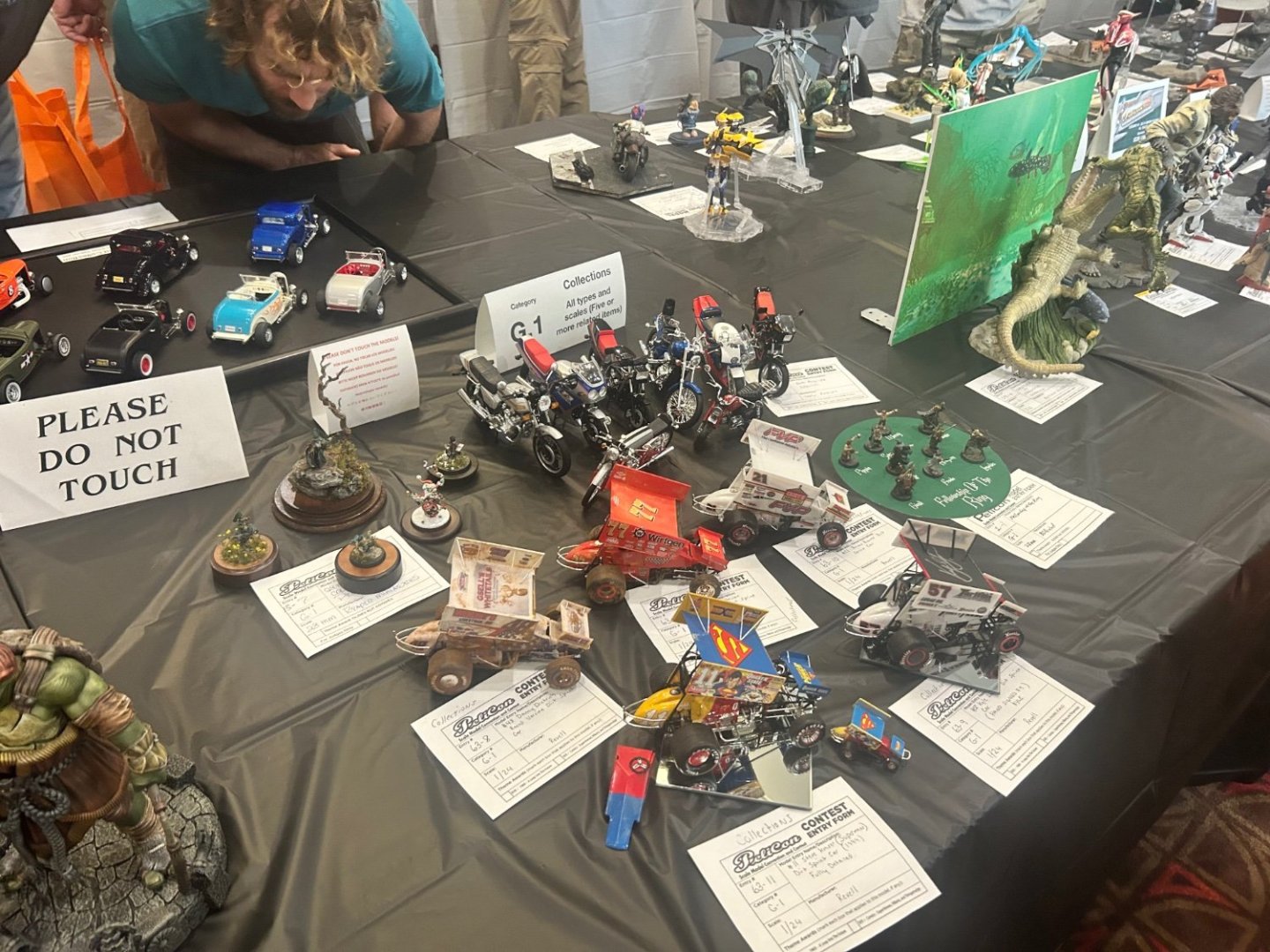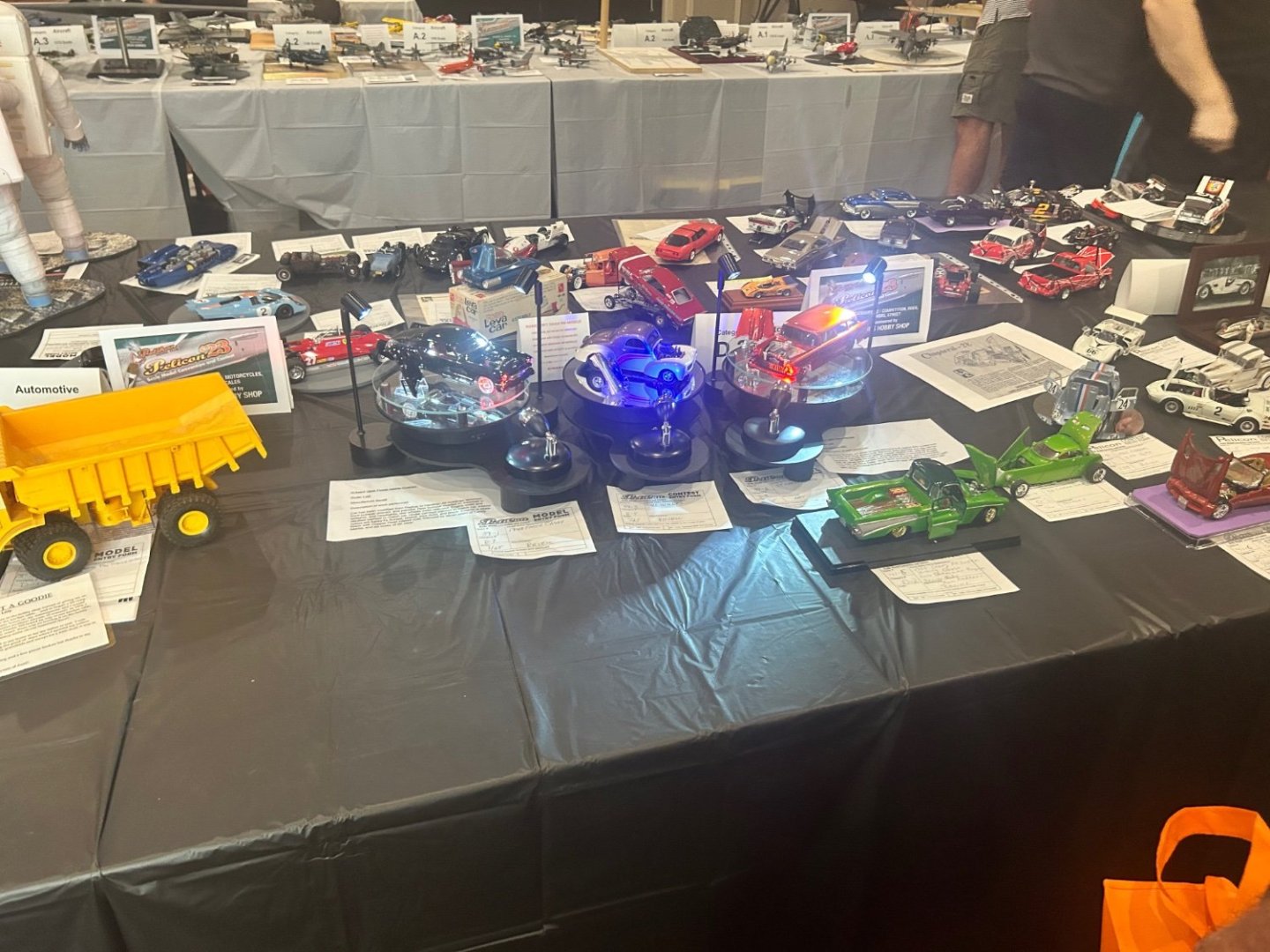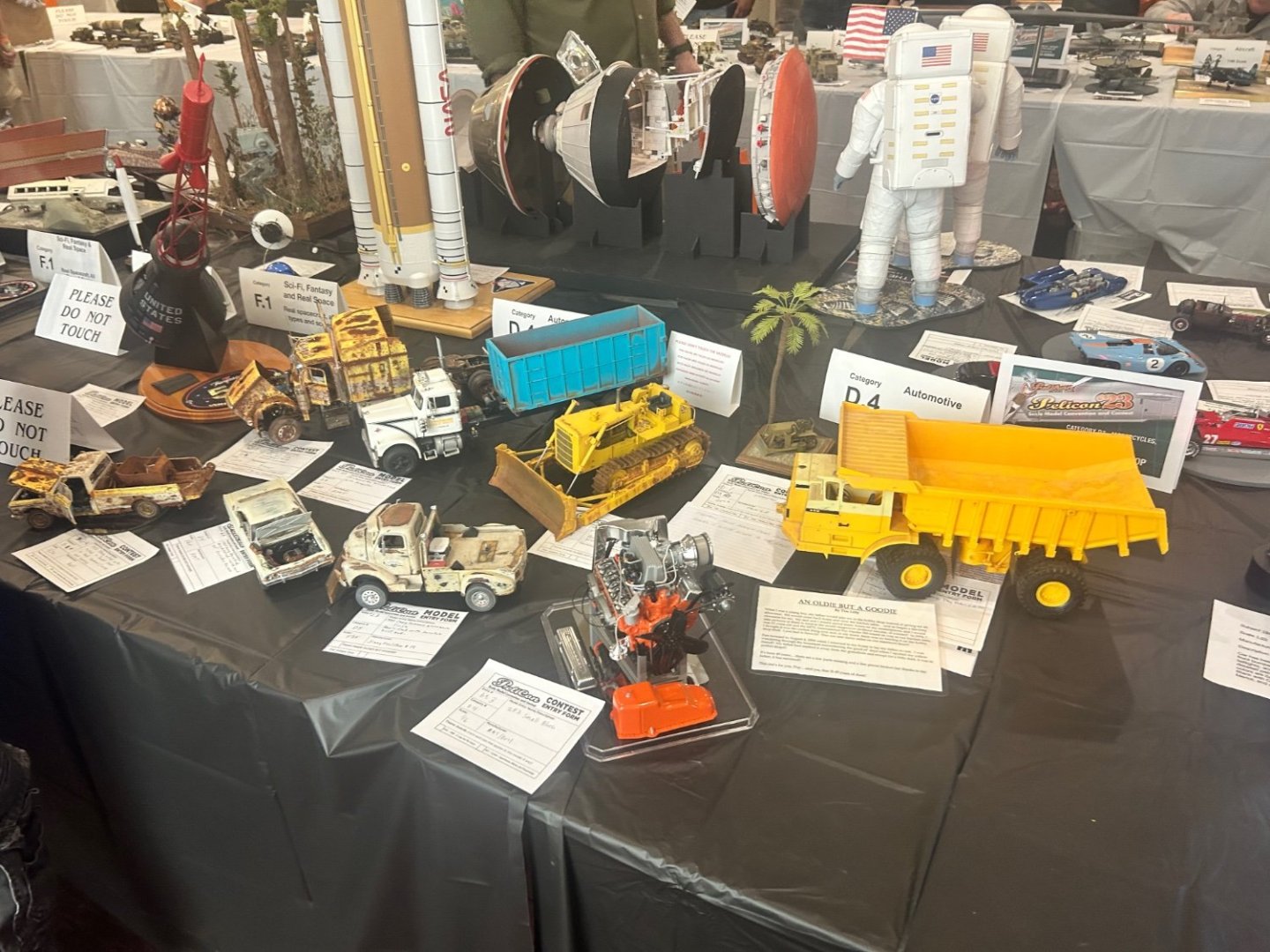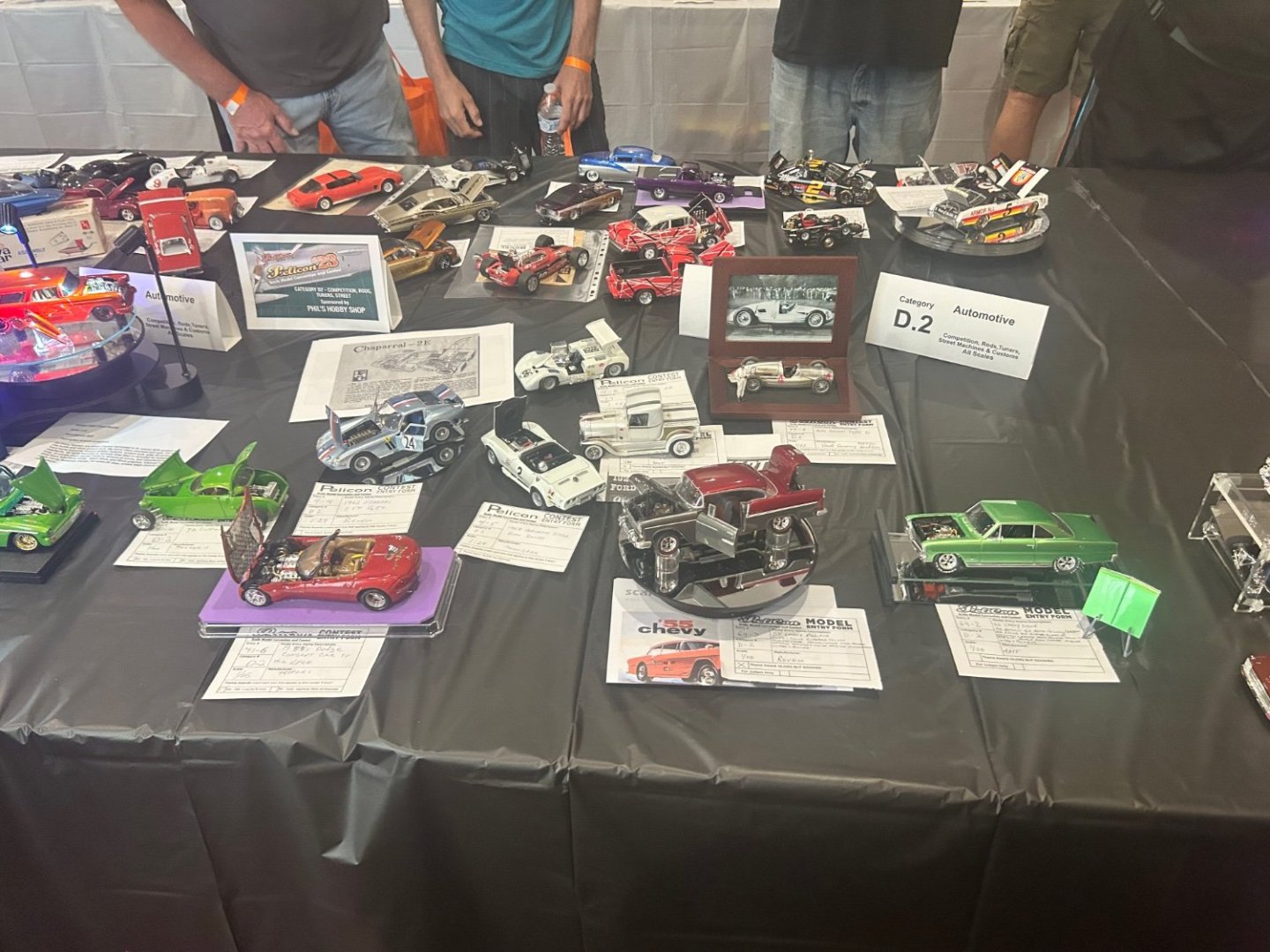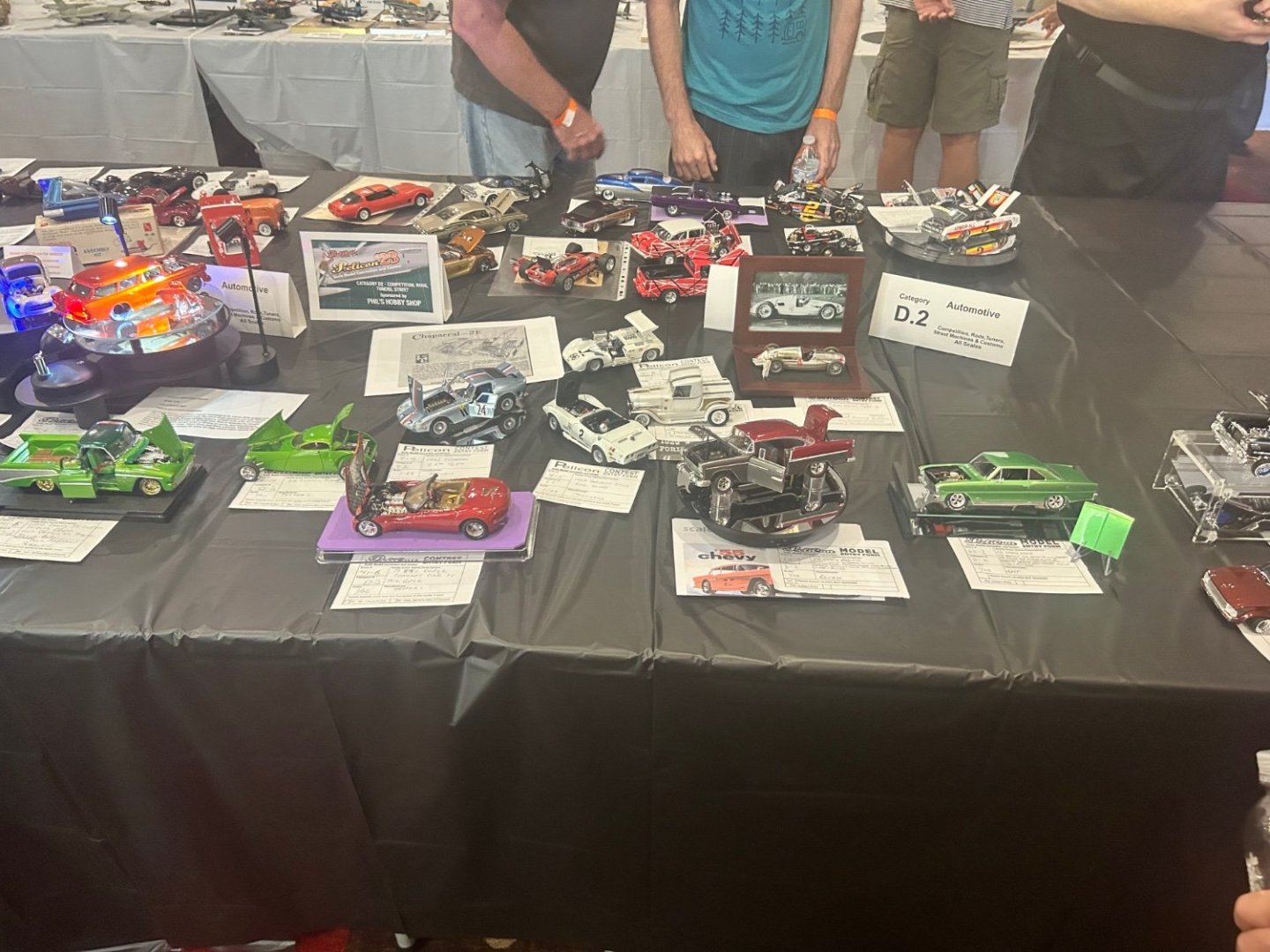-
Posts
7,747 -
Joined
-
Last visited
Content Type
Profiles
Forums
Gallery
Events
Everything posted by CDW
-
- 168 replies
-
- Scharnhorst
- Flyhawk
-
(and 1 more)
Tagged with:
-
- 225 replies
-
- I Love Kit
- Hood
-
(and 2 more)
Tagged with:
-
Airfix provides one basic engine, decently detailed, for the option of an open engine panel on top of the fuselage. Also included but not shown here are pieces to represent engine piping plumbing and wiring. The upper fuselage is partially perforated so the engine panel can readily be cut out. A paper template is included to get the precise shape cut out to fit the removable panel which comes as a separately molded part. My model will not display the open panel but it could be nice if someone wanted to take the time to detail it. The instructions suggest putting the engine in place even though it may not be openly displayed as it aides in the alignment of the entire assembly.
-
There is a lot of detail to file off on the cockpit bits. Good luck and have fun. At first, I thought these were location points for the LG assembly, but now believe they are ejector pin marks which need to be filled. Will double check then fill and retouch as needed. Does your kit have these marks, Arthur? No biggie, just something to be aware of.
-
Beginning the assembly and painting of the engines, trunking, and wheel wells. Nice details are molded in. Will pop once it gets some detail paint and a wash. All dry fitting so far shows a clean trouble-free fit with little to none seams showing up. This seems to be the best fitting Airfix kit I have worked on to date.
-
Andy One of my favorite modelers to watch and learn from is a guy named Greg, from the UK (Gregs Models on YouTube). Many times, I have watched him scan/copy his decal sheets then print a black and white copy which he uses to cut his own masking to paint his markings instead of using decals. His finished work is always superb. I believe you are right on the money about painting vs decals particularly when it comes to large stripes but it's also true of national insignias and ID numbers. often the national marking decals are not colored properly and need correction. I love the results you got painting on your stripes.
-
Does Airfix have a North American customer service center like Tamiya does, or do the replacement parts come out of GB? Either way, it's good news. In the past, I have requested to buy replacement decals for Tamiya kits I owned where the decals were ruined due to my own issues, but they replaced them for free. Was really surprised by that.
-
You should have seen my mishap with my first full-size RC helicopter. I had the Tx stick in the wrong position and as soon as I plugged in the Rx, the main rotor started to spin up and that thing left a heck of a mark on my forearm. It's crazy how much power those things produce. If fully spinning, it could easily cut off a finger, I am certain. It's good for you that your hand was nowhere close to your props when that thing fired up or this would have been a whole different story. These things are definitely not harmless toys.
-
Just $29? Man, I am behind the times. I had no idea you could by a transmitter for that small amount. How many and what type batteries does it take? I presume AA's. Did that include the receiver, too?
-
One last dry fit before gluing the fuselage halves together. A lot of detail buried inside there. You can clearly see the offset between the tandem seats that Ken spoke about in an earlier part of this thread. Thanks again because I would surely thought I put something together wrong if he had not mentioned this fact. Looks odd and have never seen that on another two-seater .
-
My brother and I both owned Panhead Harley Davidson motorcycles in the early '70's. Mine was a 1964 FLH model Duo Glide and his was a 1958 FL model Dou Glide. The FLH signified high compression versus the FL was standard compression. I can tell you for sure that the FLH was a much higher performance engine than the standard one. In the photos, his was the red 1958 Panhead. Mine was the black 1964 Panhead.
-
It's better by orders of magnitude than my best hairy stick efforts could produce. The Quinta Studios 3D sets are very economical when compared to Eduard photo etch sets, but the Eduard versions of 3D decals are a little on the pricey side here in the USA. Prices may vary in other countries, I don't know.
-
It's the first I have seen or used from Eduard. Previously I bought some similar items from a company in Ukraine but have not used them yet. Look up "Quinta Studios" on Ebay. There are 3D decal interior sets for a LOT of different aircraft. Models I have seen where they've been used look very realistic. Like the standard photo etch sets, they require you file down flat all existing raised details where they will be used.
-
I agree. Motorcycles and sailing ships were under-represented. There was that motorcycle "collection" (in that collection category), but no others. Really, in general all ships were under-represented which is a big part of the reason my four ships received awards. But who knows, the next show may have a whole different outcome in terms of what modelers decide to bring for display. I think that motorcycles and ships perhaps are too tedious for many modelers and as a consequence they avoid building them.
-
Thanks guys, much appreciated. This is the first time I have used 3D decals. They are a bit on the stiff side which is to be expected I suppose. Rereading the instructions, they suggest using either/or white glue or decal setting solution to help the decals seat down. I tried using decal setting solution as it seemed less messy. Will let these dry over night to see how well they adhere to the instrument panel. Will try white glue if I find this approach unsatisfactory.
-
This is an Eduard 3D cockpit detail set that goes down like a water slide decal or similar to it. They recommend the use of a secondary adhesive such as white glue under each panel. In order to use the set, the raised details must be first removed. Next will prime and paint before applying the panels.
-
Thanks for all the kind words. It was a very unexpected outcome to be sure. Now I'm ready to move on and work on this Buccaneer project. Didn't see a single example of it at the contest. In general, British aircraft were very unrepresented at this event and in my collection as well. In the coming months I hope to remedy my collection with a number of different Brit aircraft.
-
This was an IPMS region 11 event. This region includes all of Florida except for a small portion of the panhandle but anyone from anywhere can attend and enter models into the contest. Not sure where all the modelrs came from but I'm sure the club knows as it was required information on the master entry sheet which only the club is privy to. By the way for what it's worth, I won 2 first place awards with my 1:35 M1240 MRAP and 1:700 Prinz Eugen; 4 second place awards with my 1:35 Shot Kal Gimel (IDF Centurian), 1:24 Tamiya Enzo Ferrari, 1:700 HMS Hood, 1:48 Bristol F.2B; and 2 third place awards with my 1:700 Scharnhorst 1940, and 1:700 IJN Akatsushima Seaplane Tender.
About us
Modelshipworld - Advancing Ship Modeling through Research
SSL Secured
Your security is important for us so this Website is SSL-Secured
NRG Mailing Address
Nautical Research Guild
237 South Lincoln Street
Westmont IL, 60559-1917
Model Ship World ® and the MSW logo are Registered Trademarks, and belong to the Nautical Research Guild (United States Patent and Trademark Office: No. 6,929,264 & No. 6,929,274, registered Dec. 20, 2022)
Helpful Links
About the NRG
If you enjoy building ship models that are historically accurate as well as beautiful, then The Nautical Research Guild (NRG) is just right for you.
The Guild is a non-profit educational organization whose mission is to “Advance Ship Modeling Through Research”. We provide support to our members in their efforts to raise the quality of their model ships.
The Nautical Research Guild has published our world-renowned quarterly magazine, The Nautical Research Journal, since 1955. The pages of the Journal are full of articles by accomplished ship modelers who show you how they create those exquisite details on their models, and by maritime historians who show you the correct details to build. The Journal is available in both print and digital editions. Go to the NRG web site (www.thenrg.org) to download a complimentary digital copy of the Journal. The NRG also publishes plan sets, books and compilations of back issues of the Journal and the former Ships in Scale and Model Ship Builder magazines.

.jpg.7e80607770d9078b2f0b470e8c9c33ac.jpg)

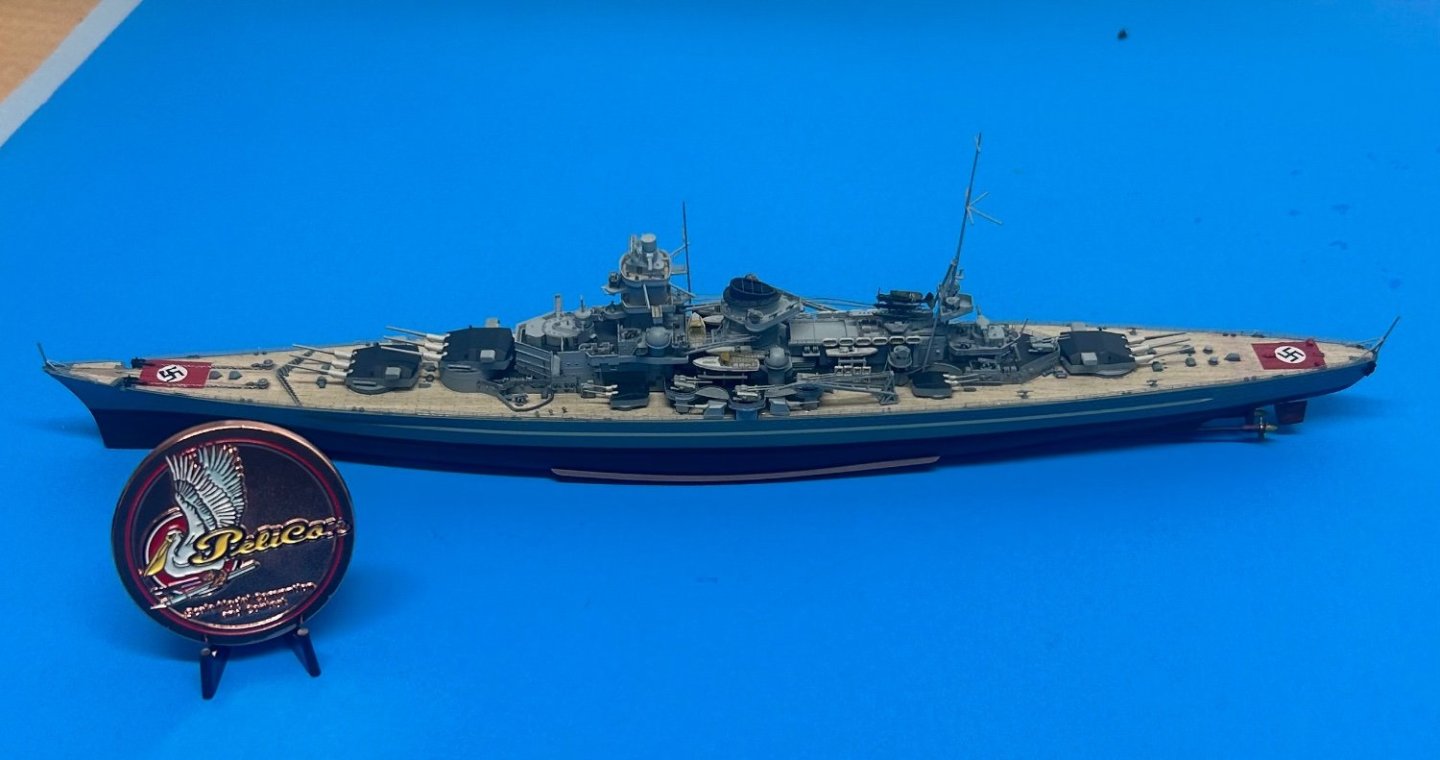

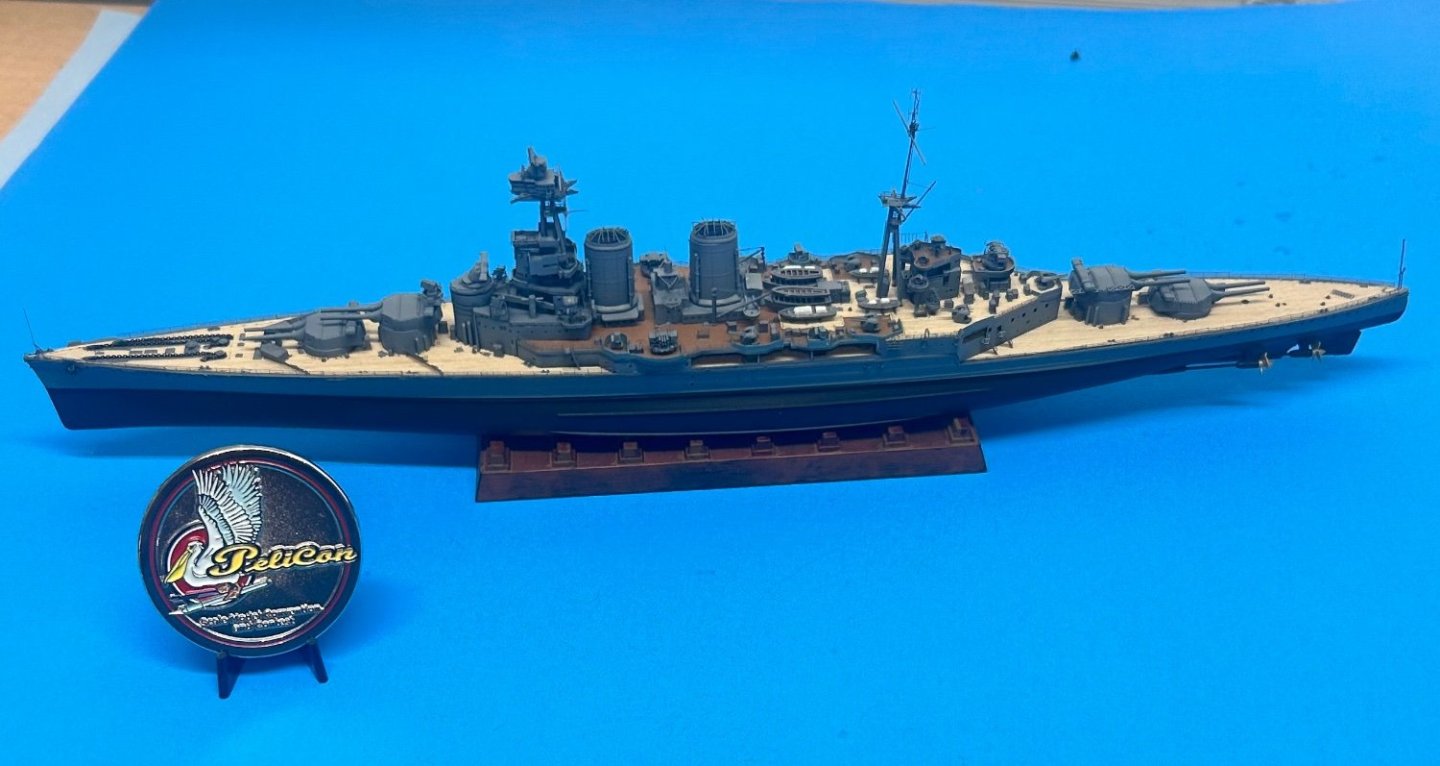

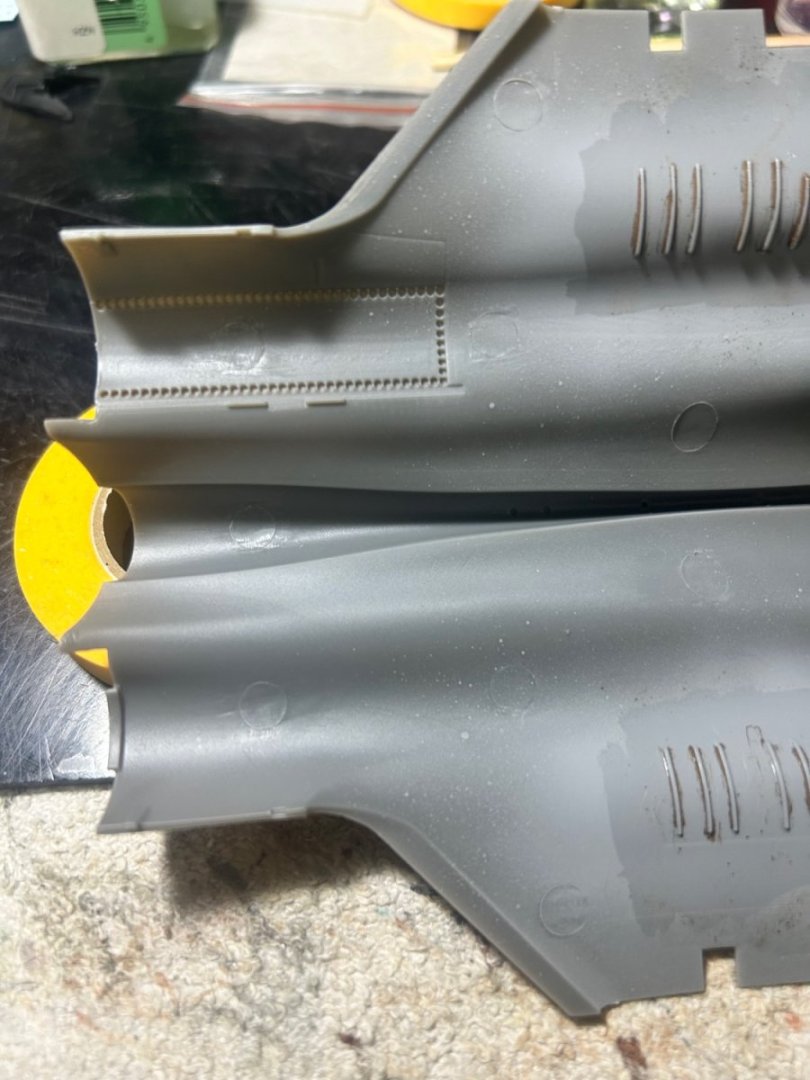
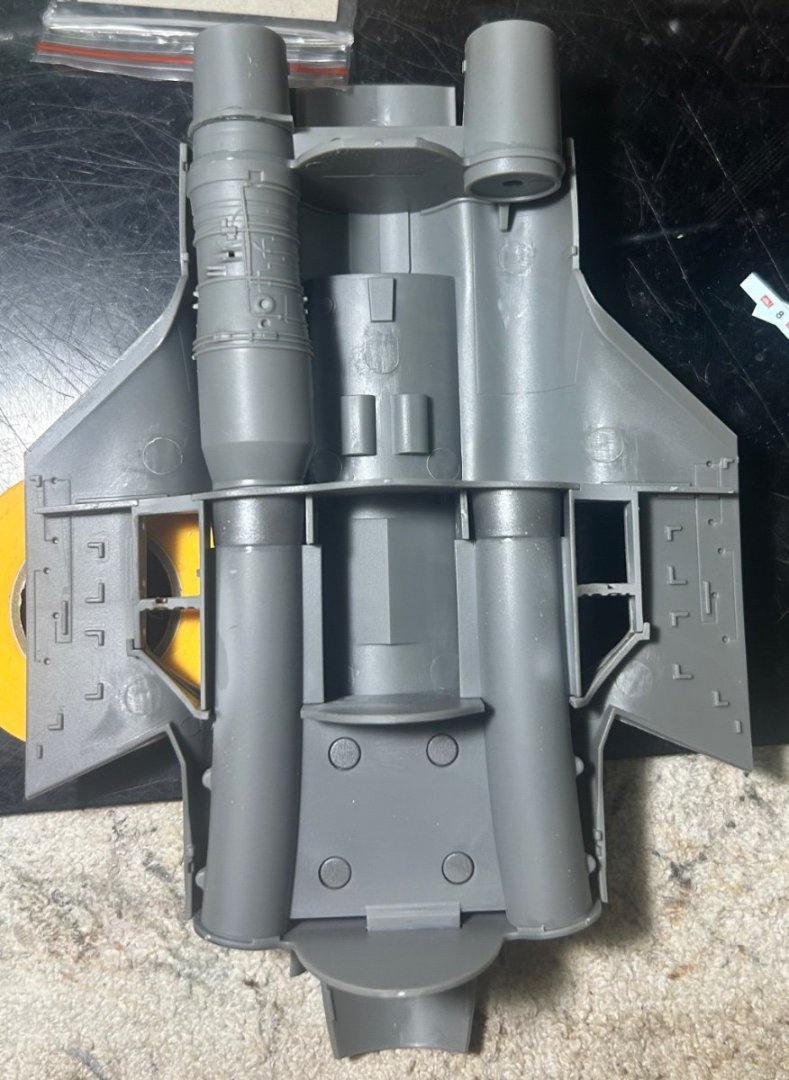
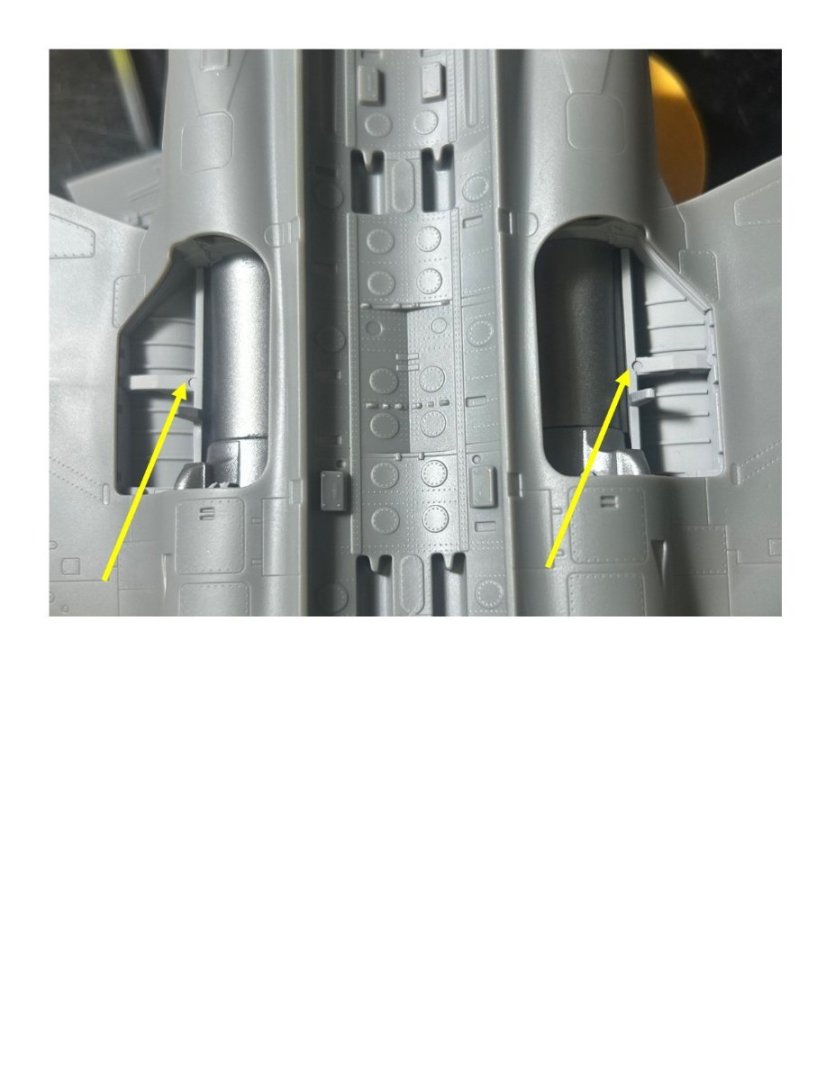
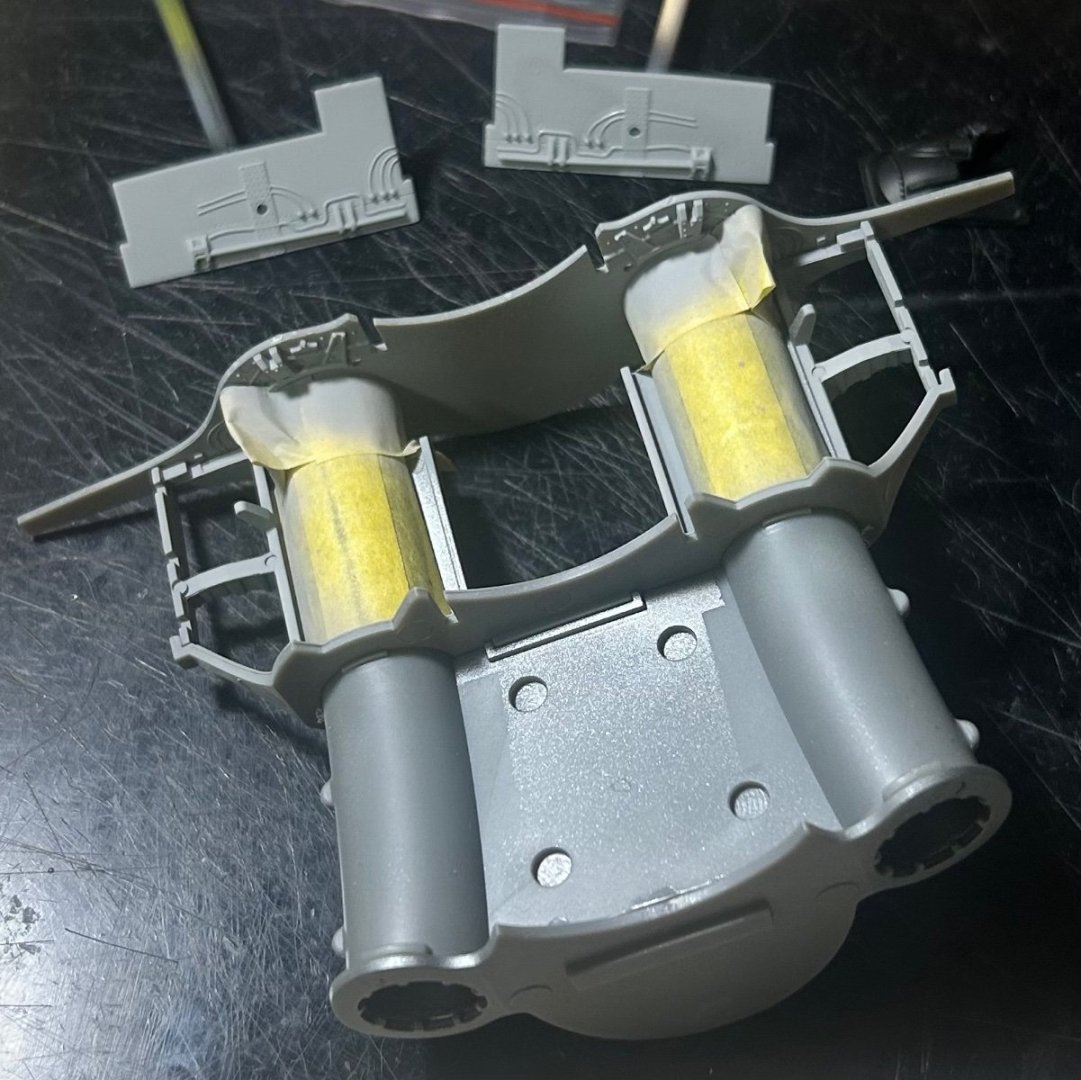
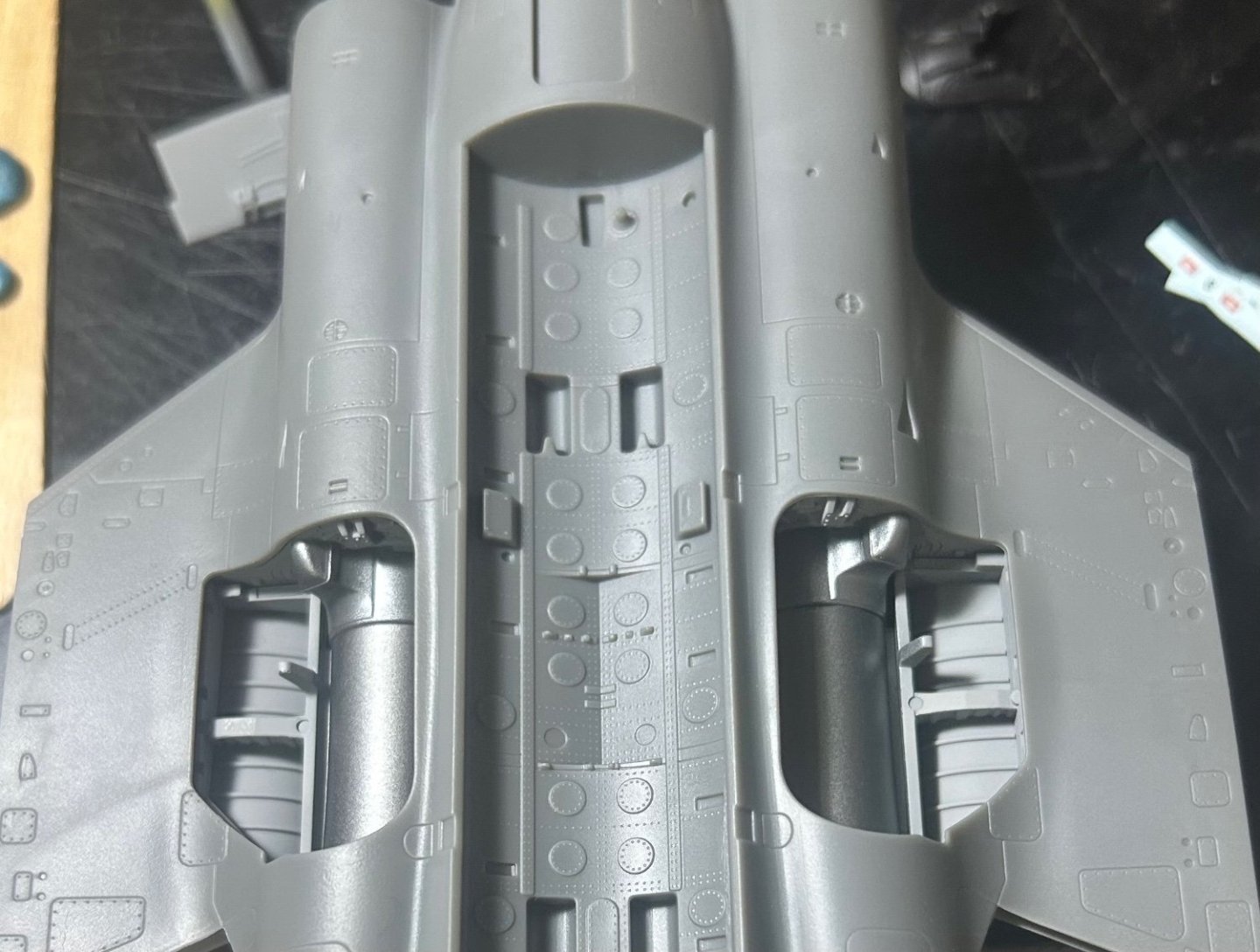
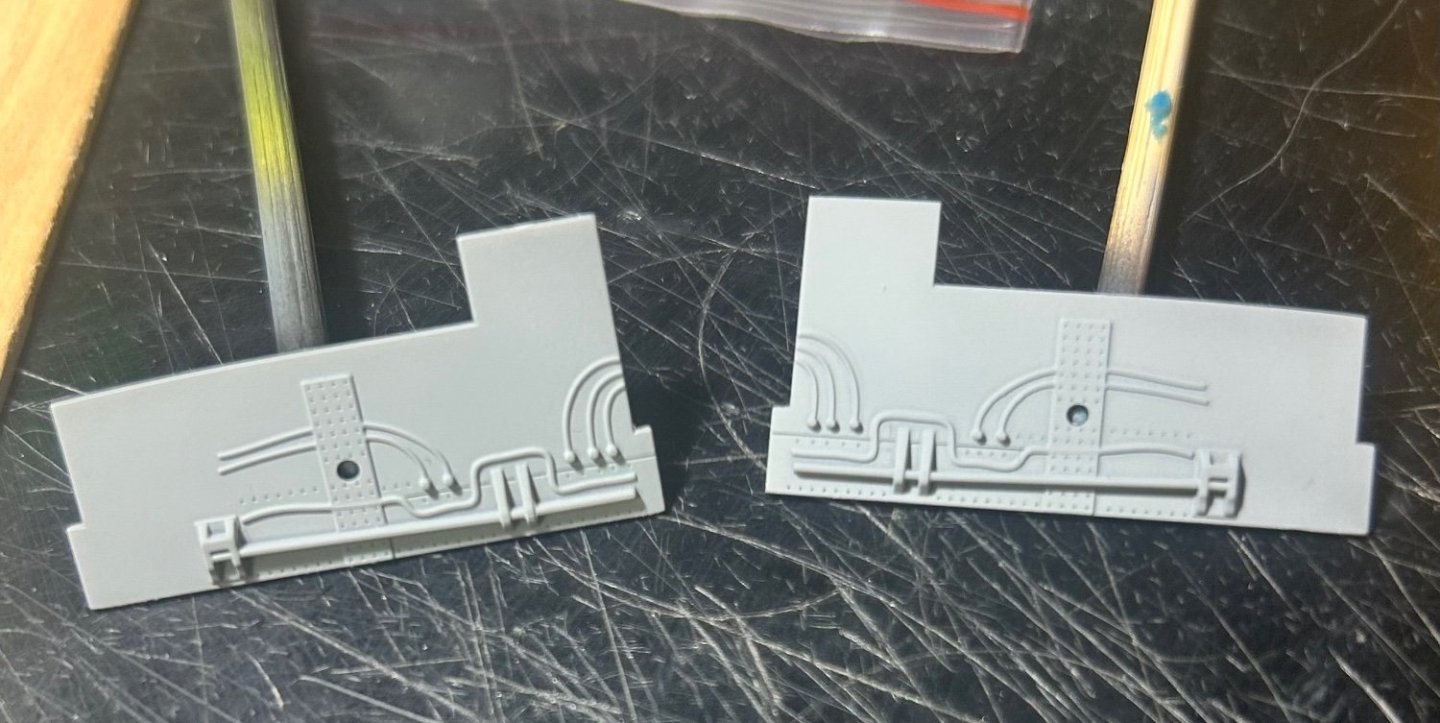
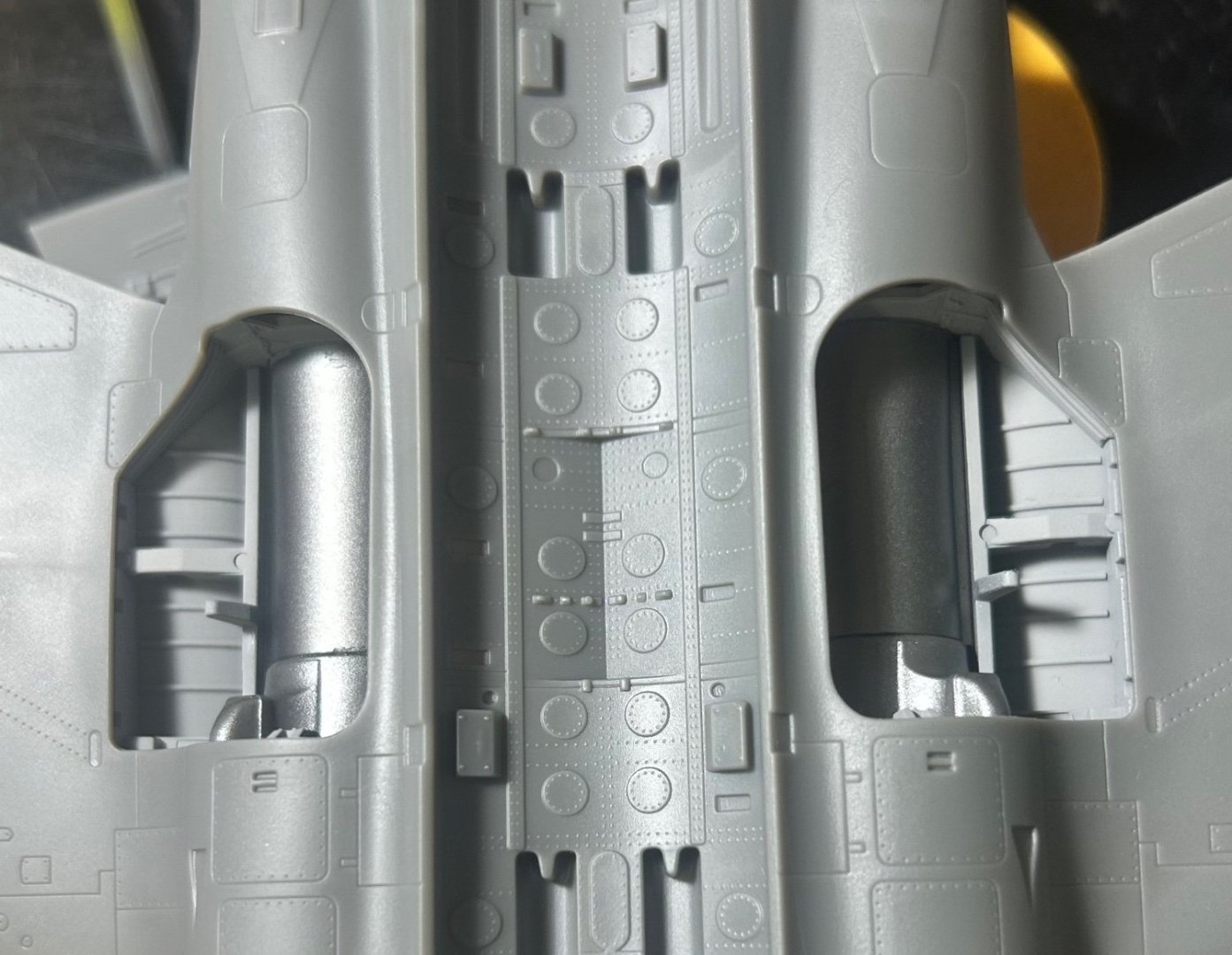
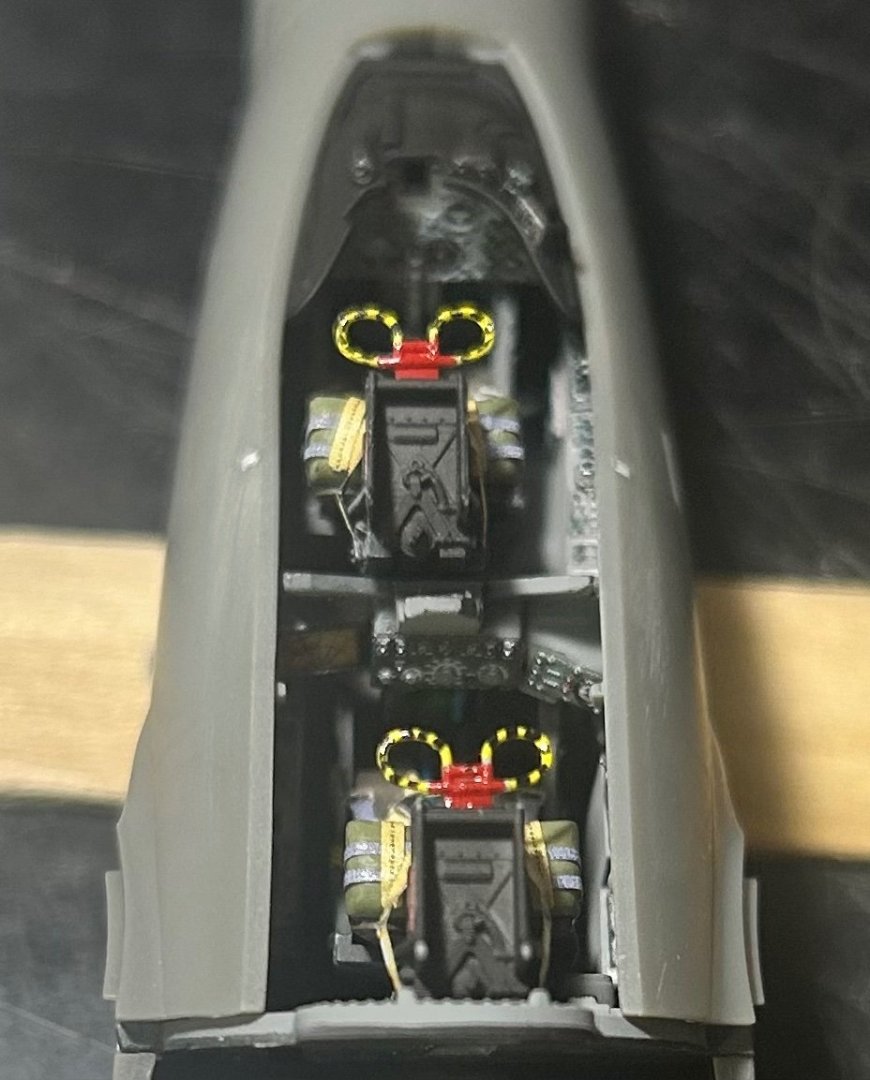
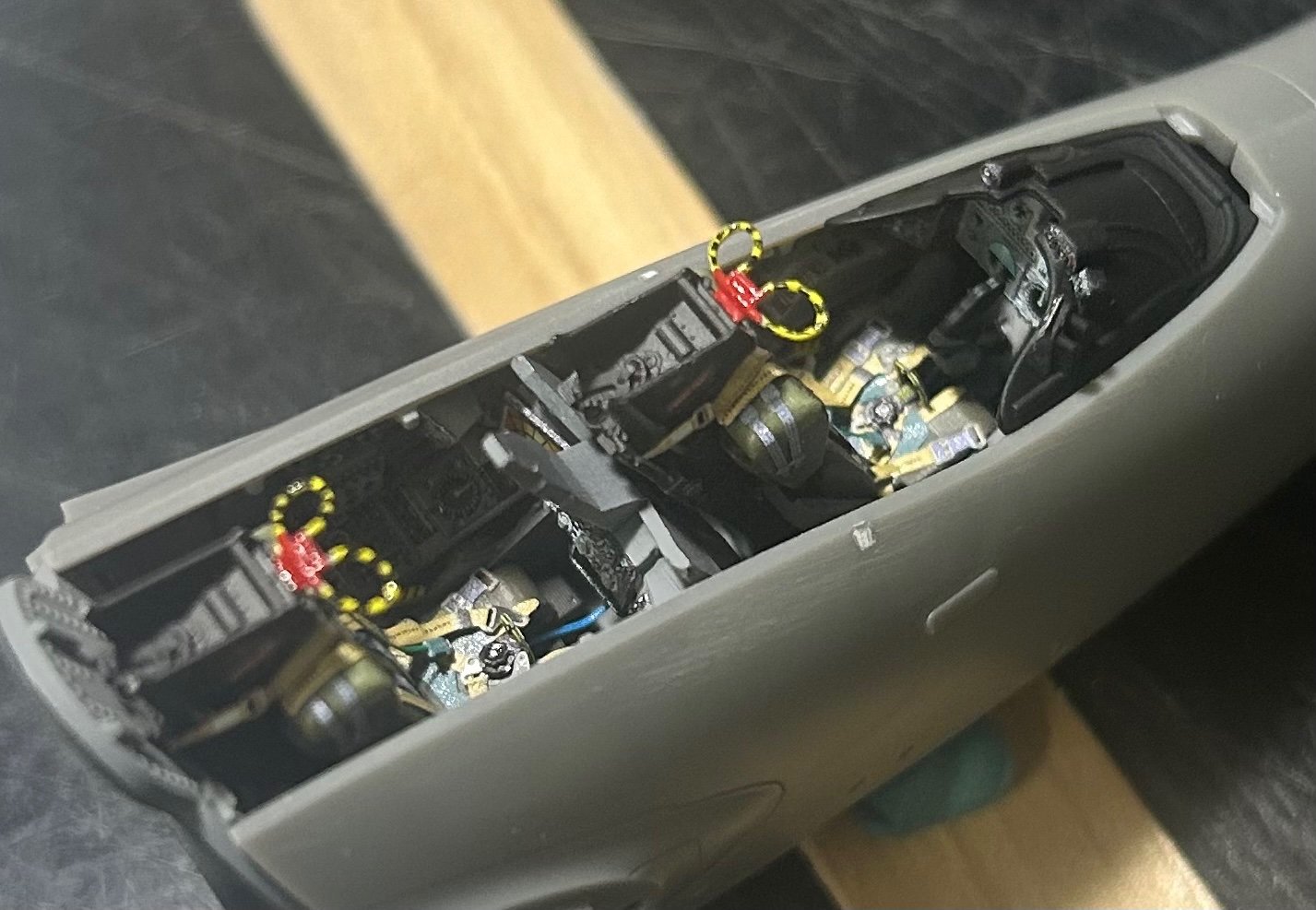
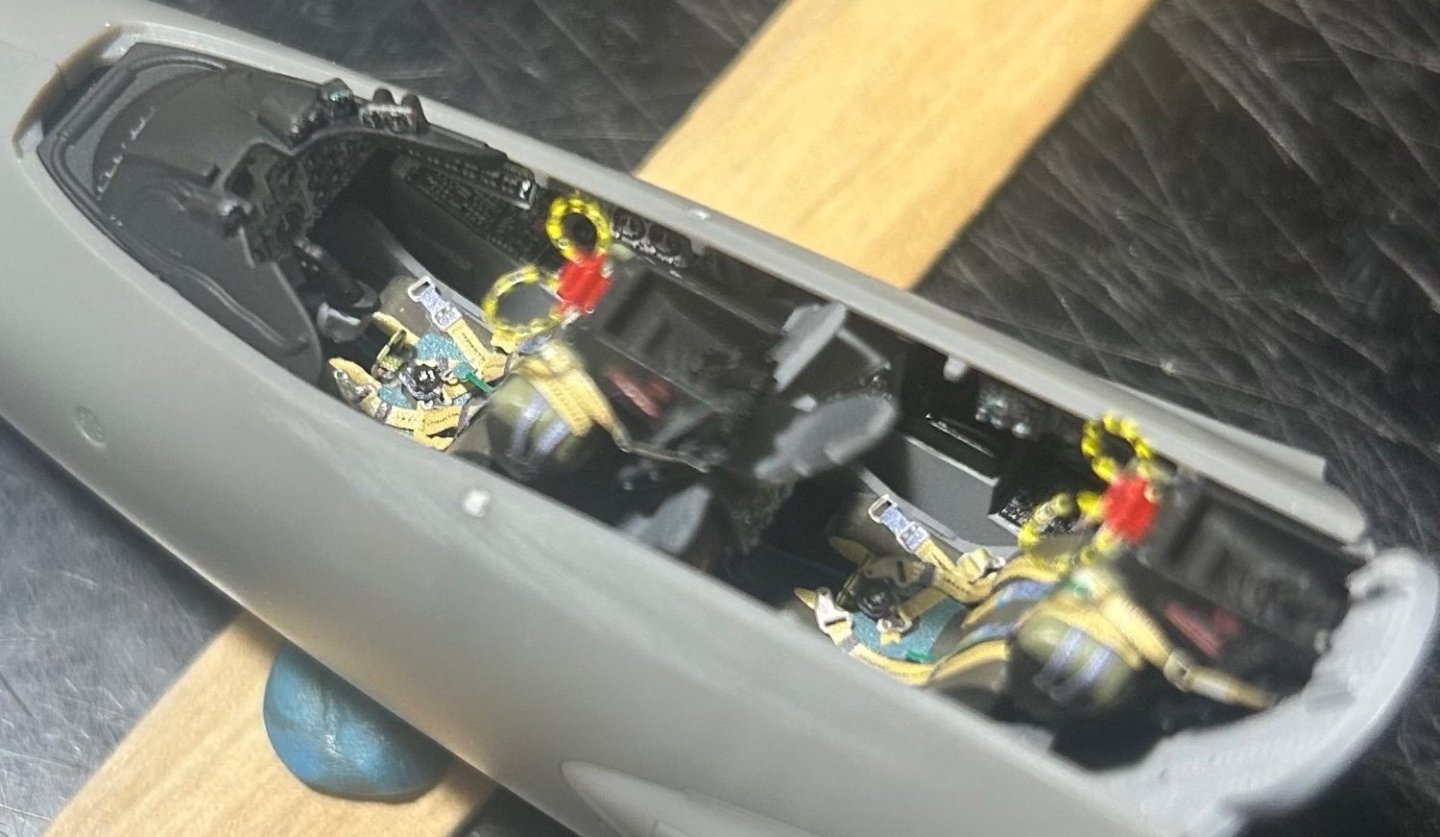
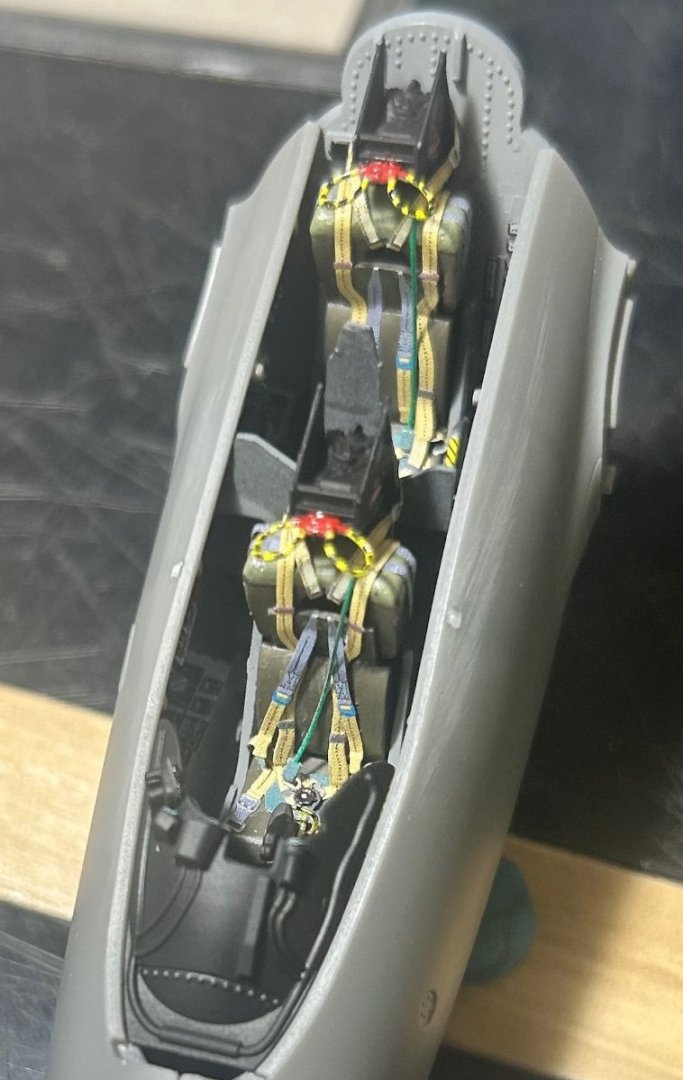
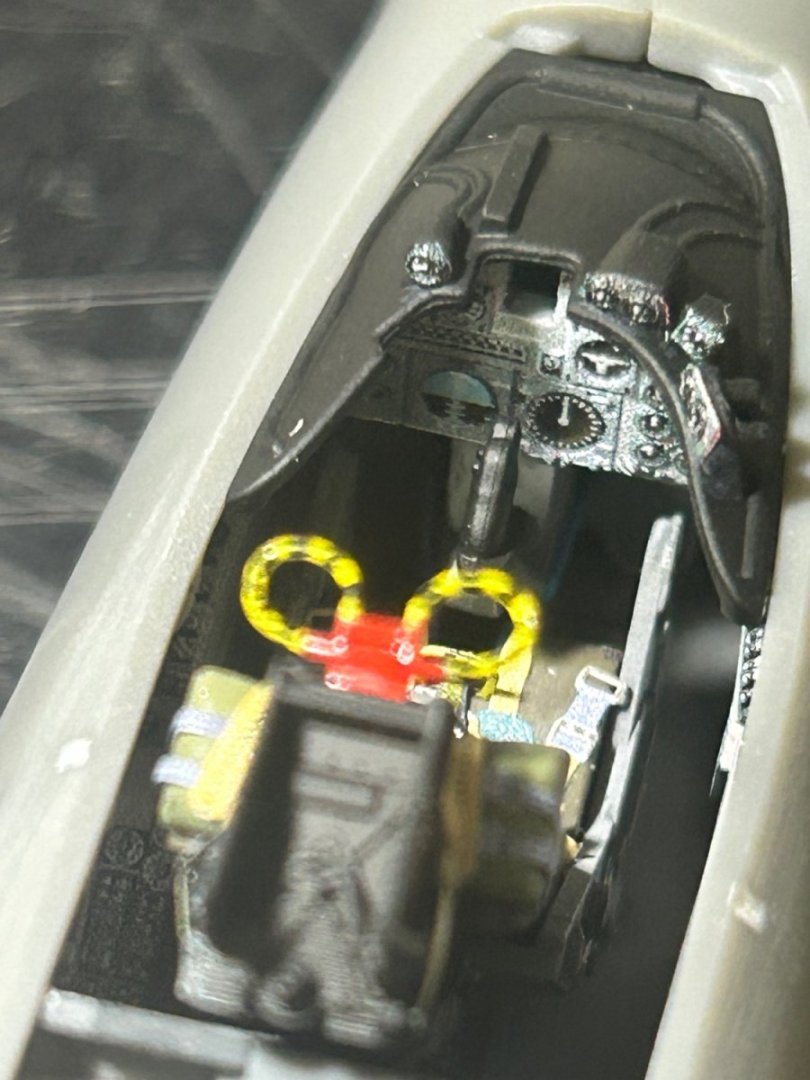
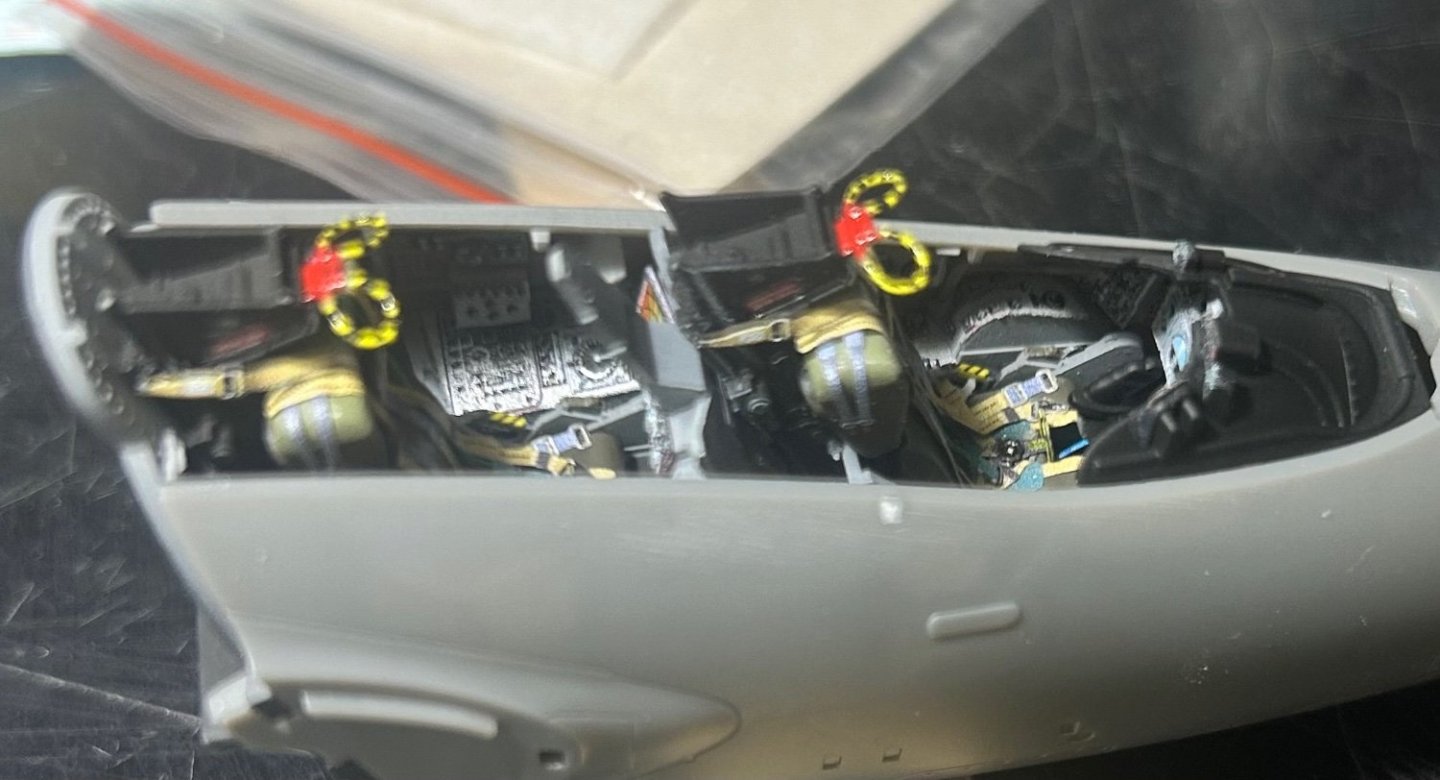
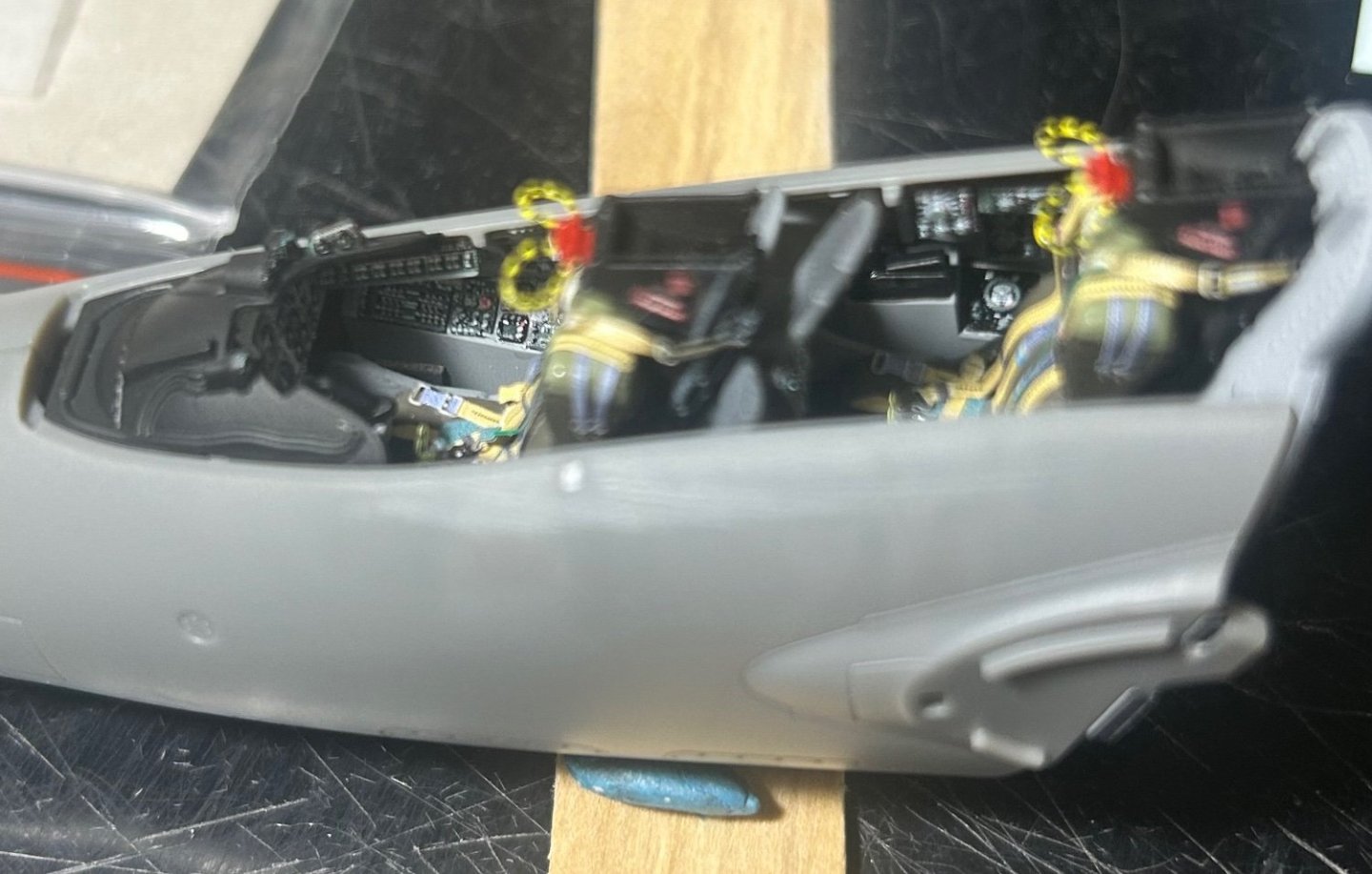
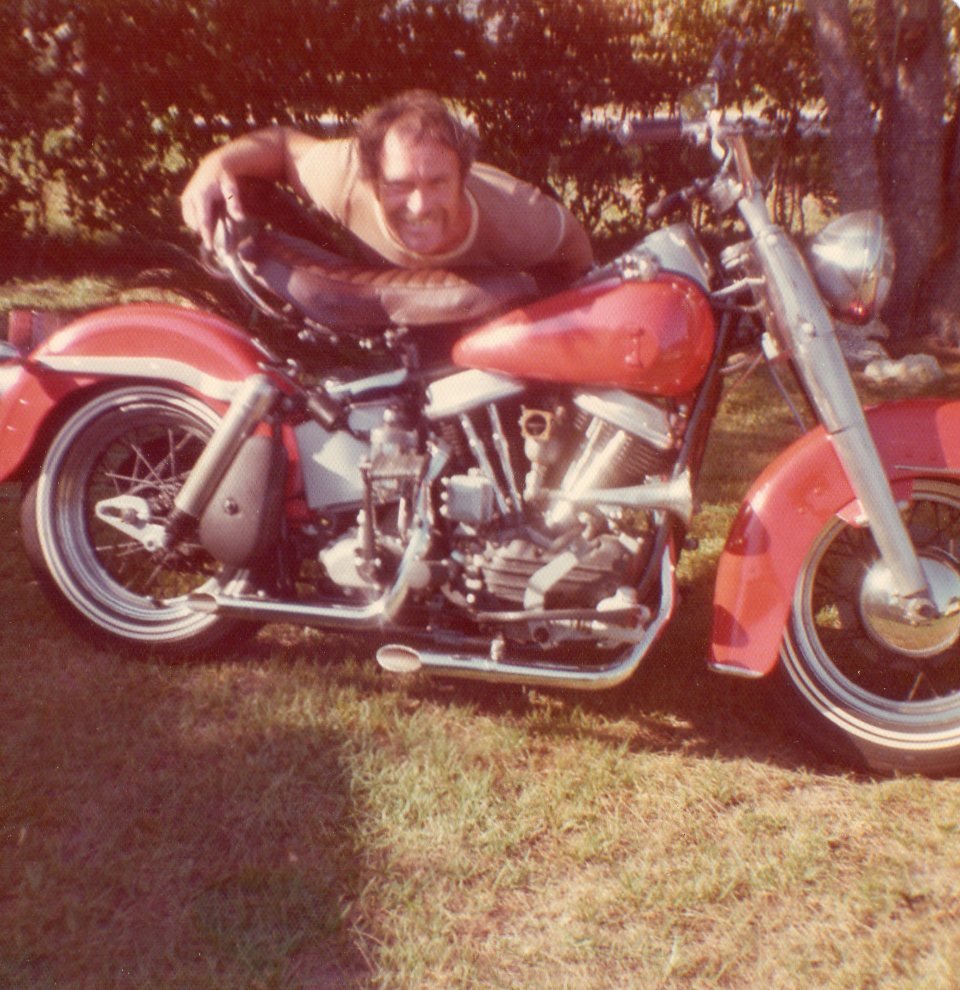
.thumb.jpg.b8a003d15b7f05de121a502b2cb1eea1.jpg)
